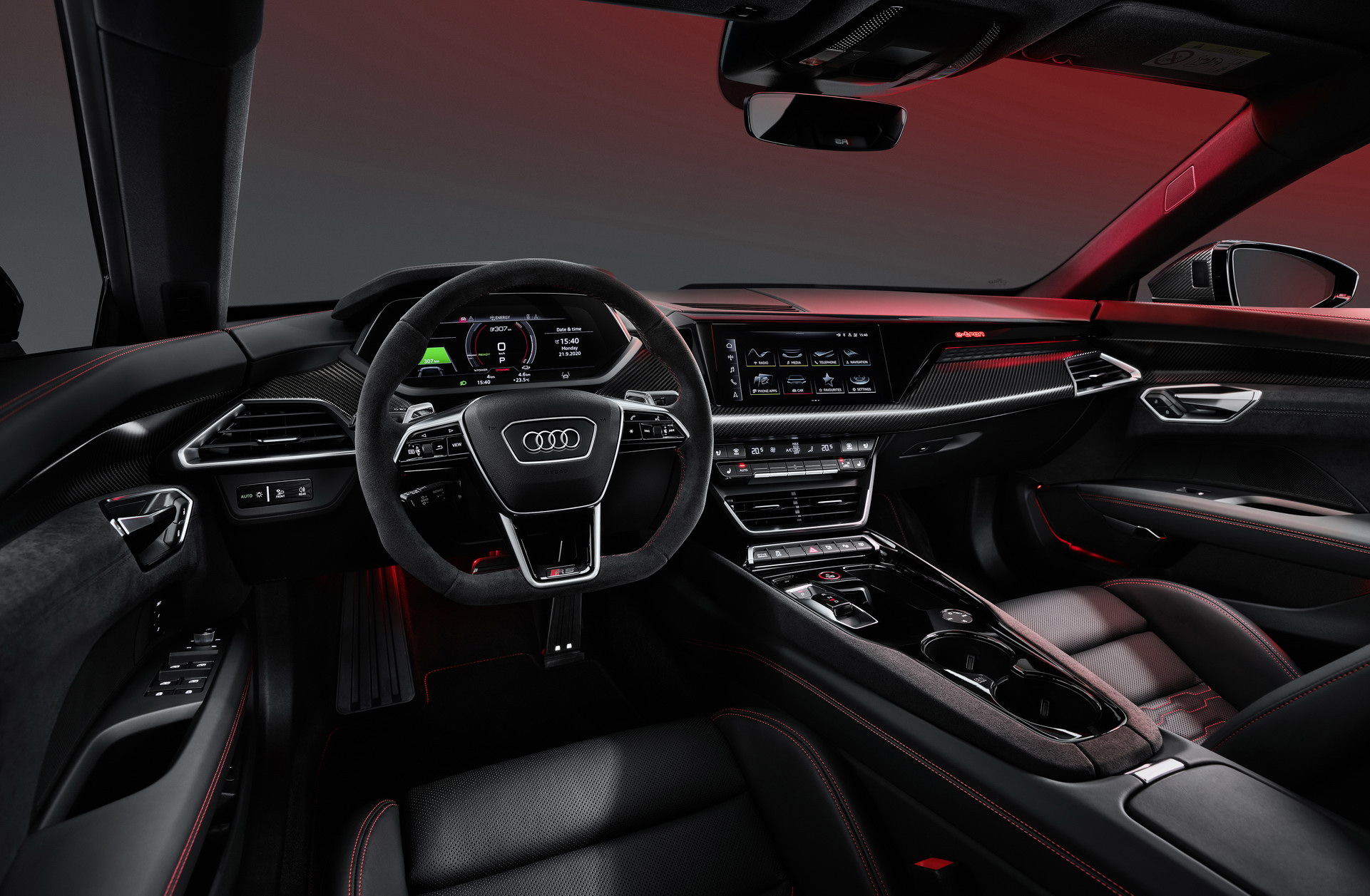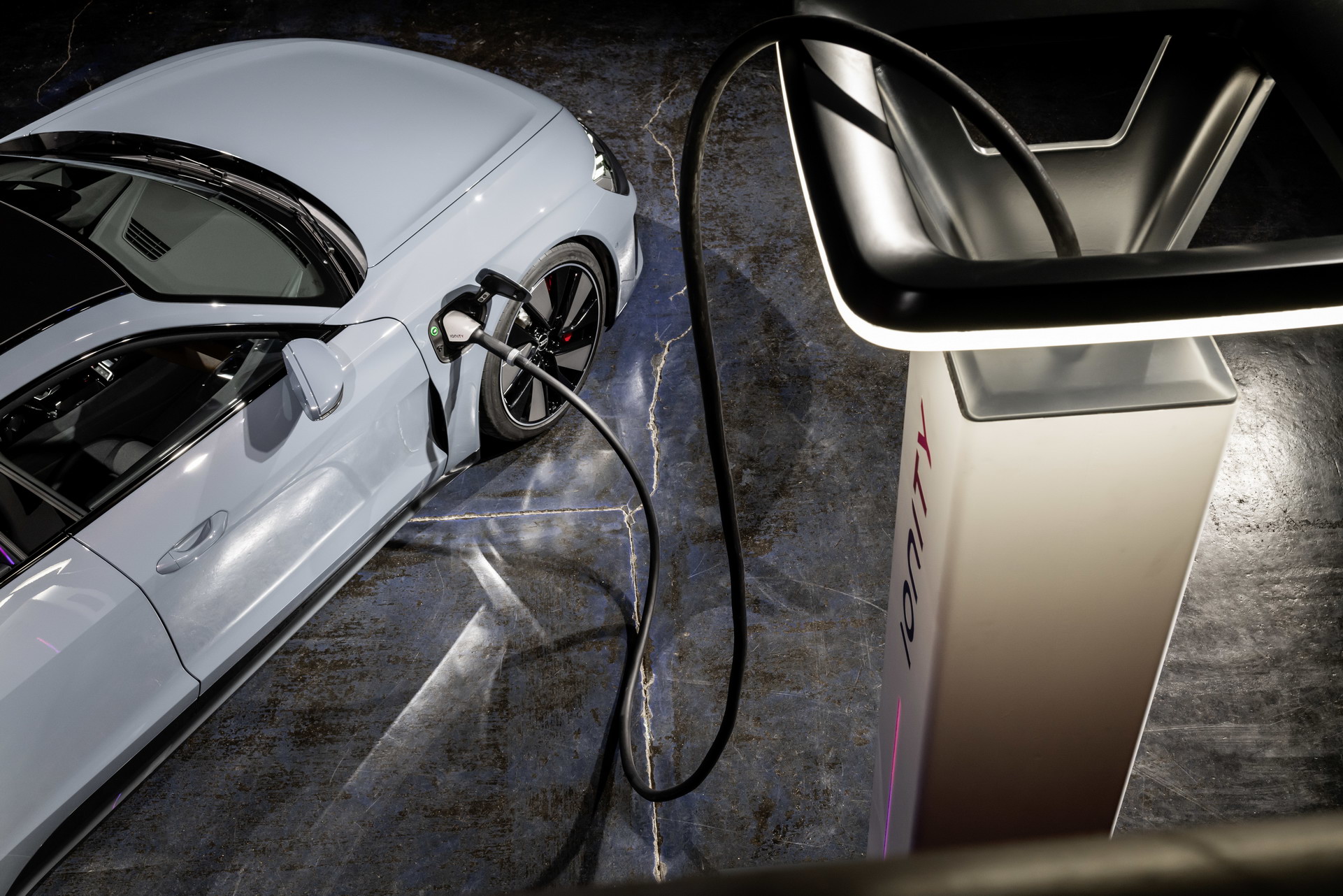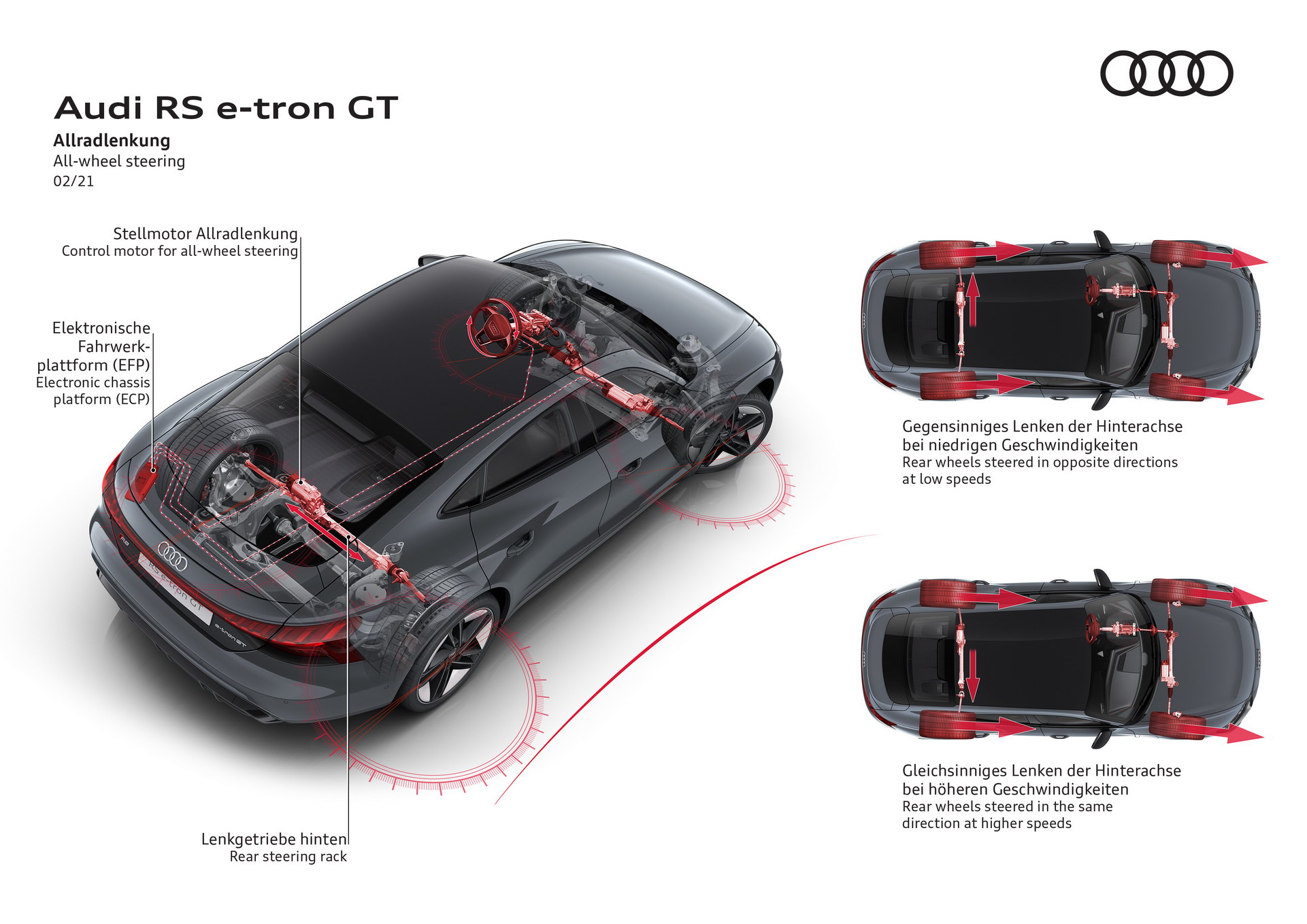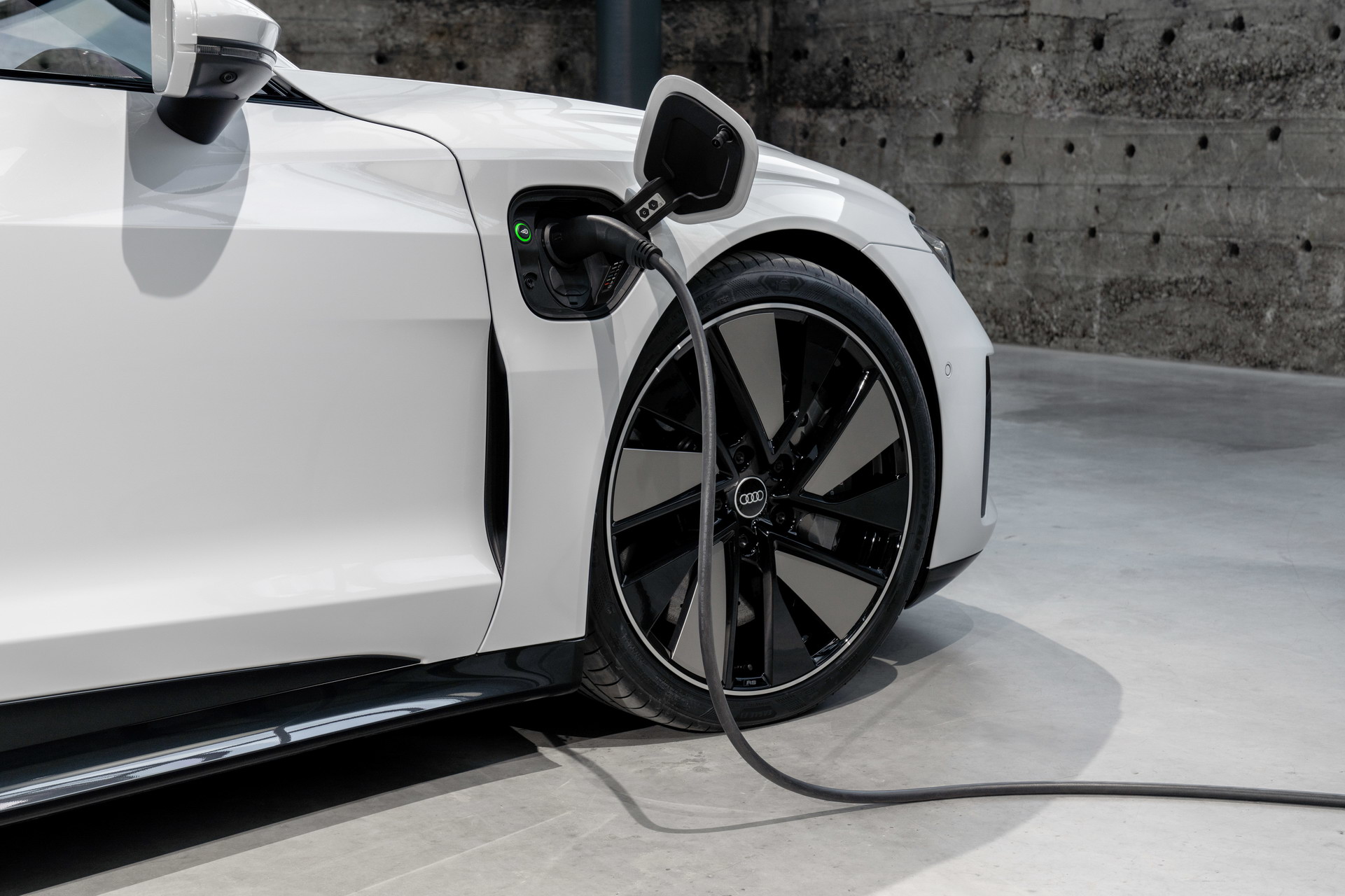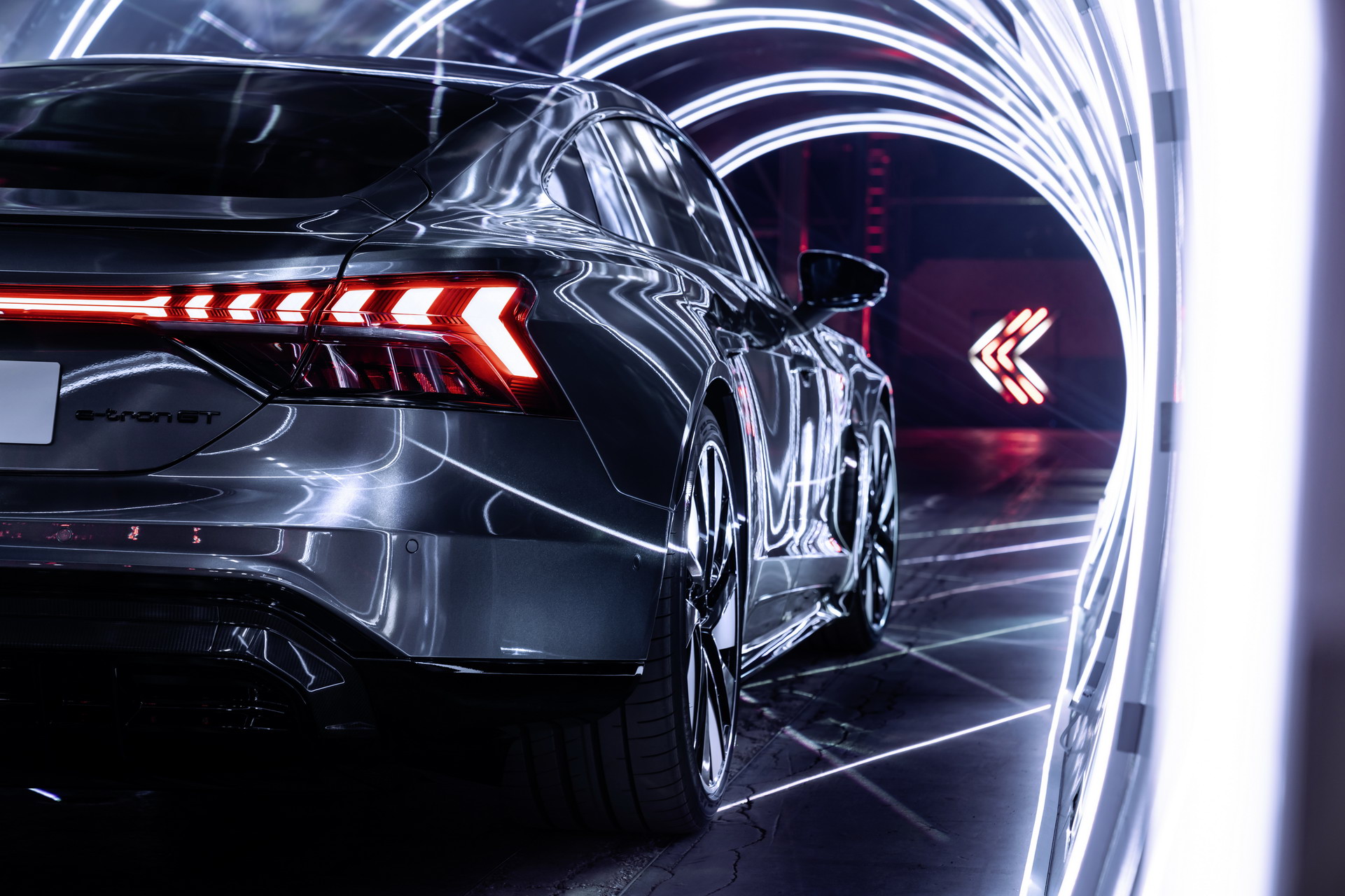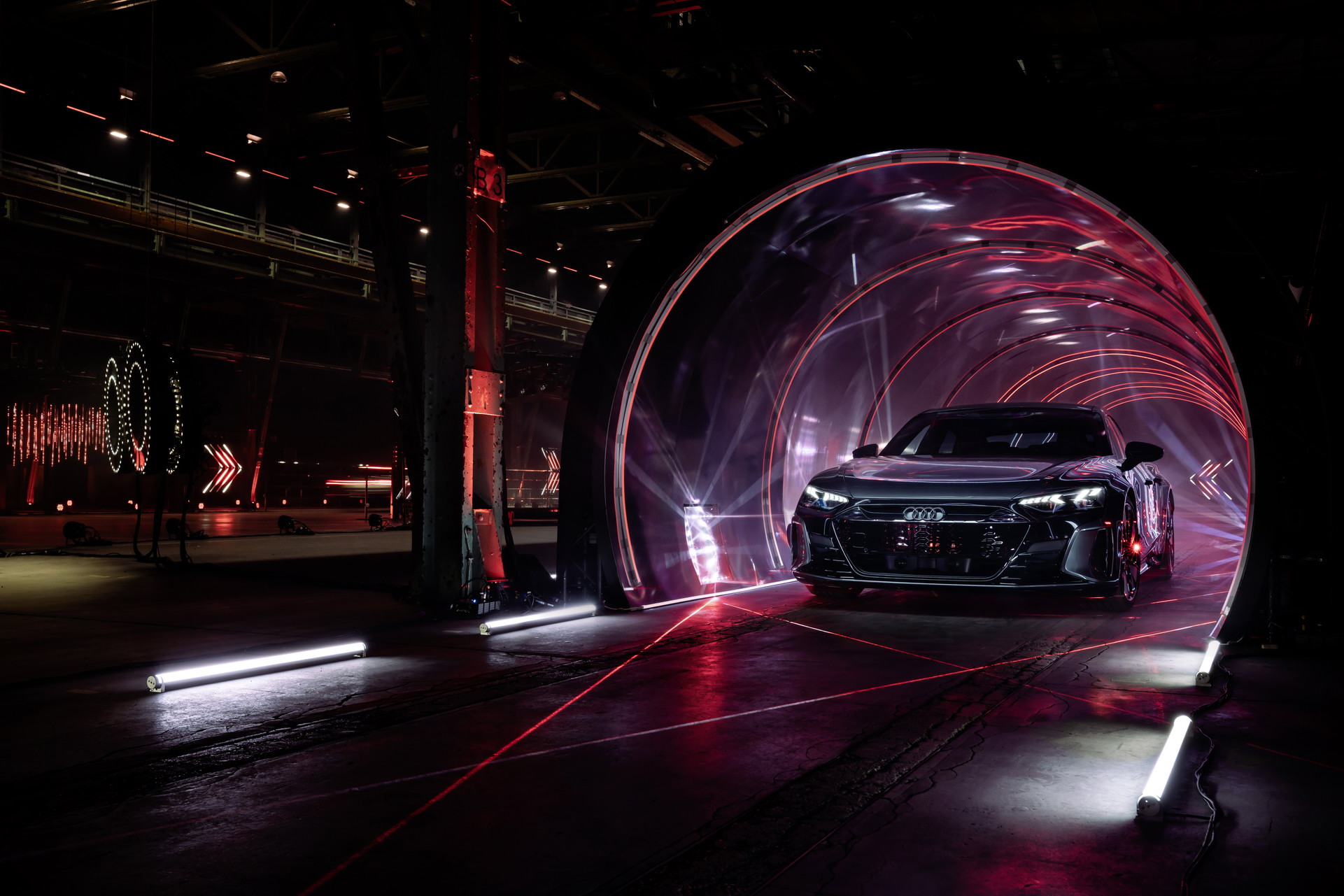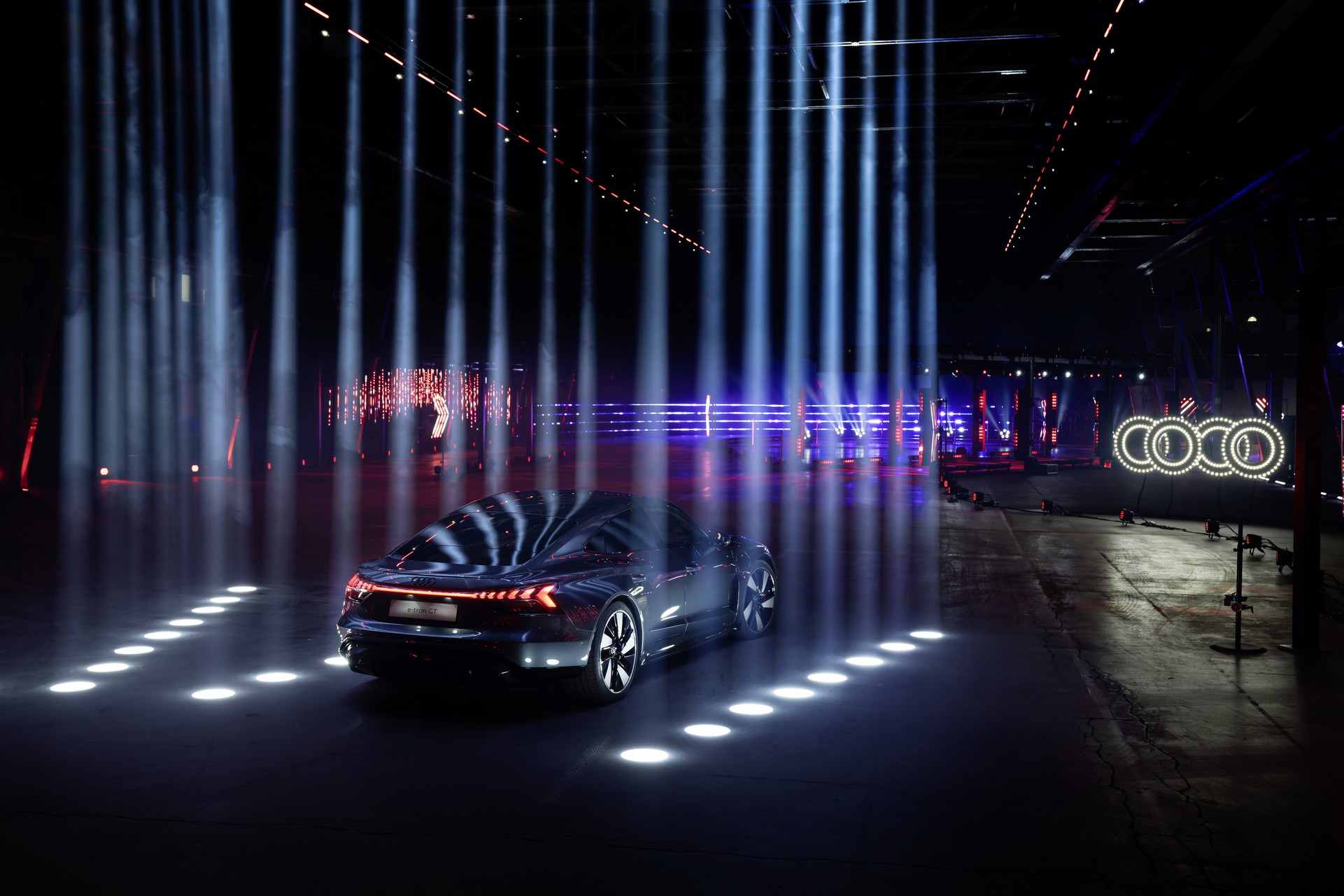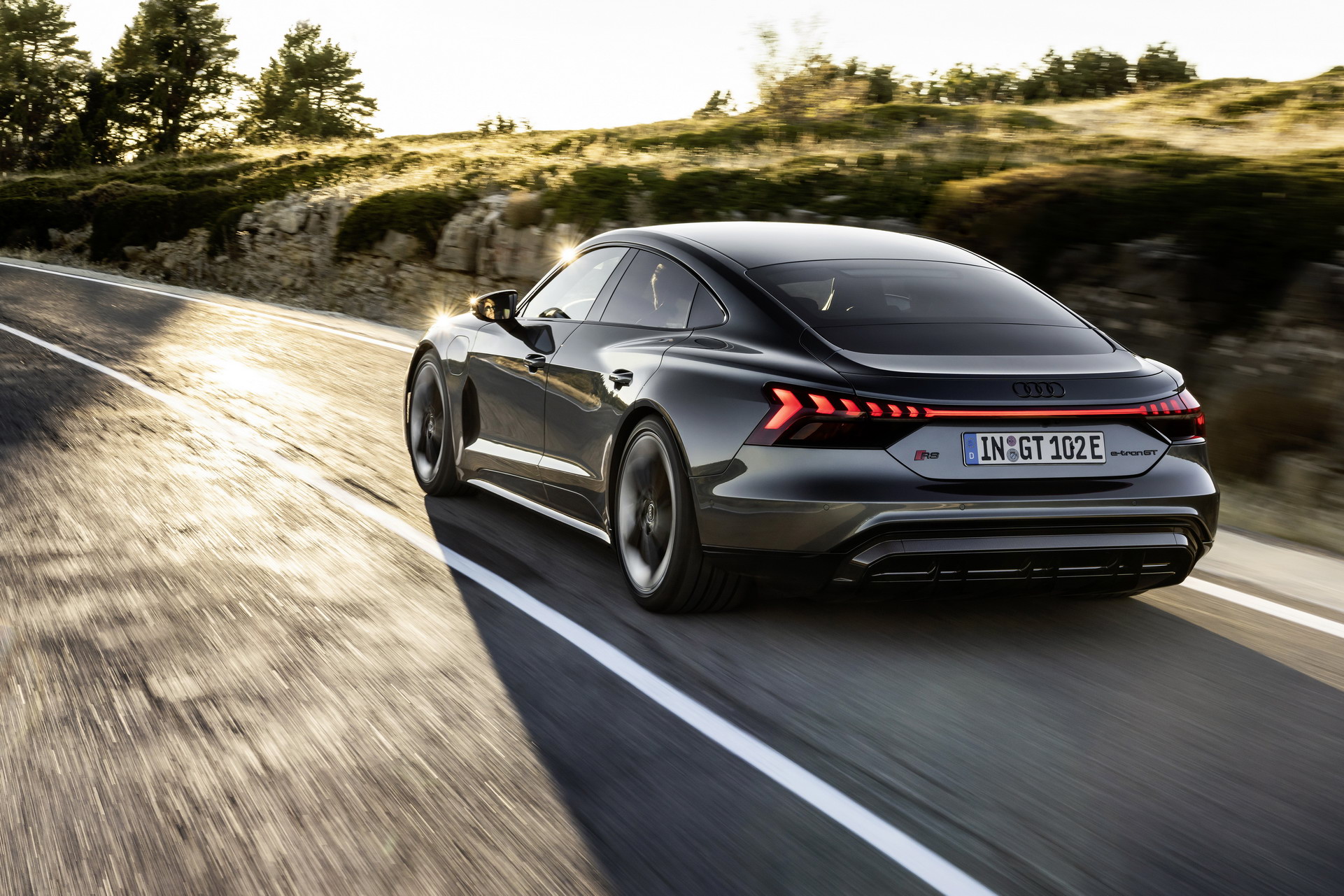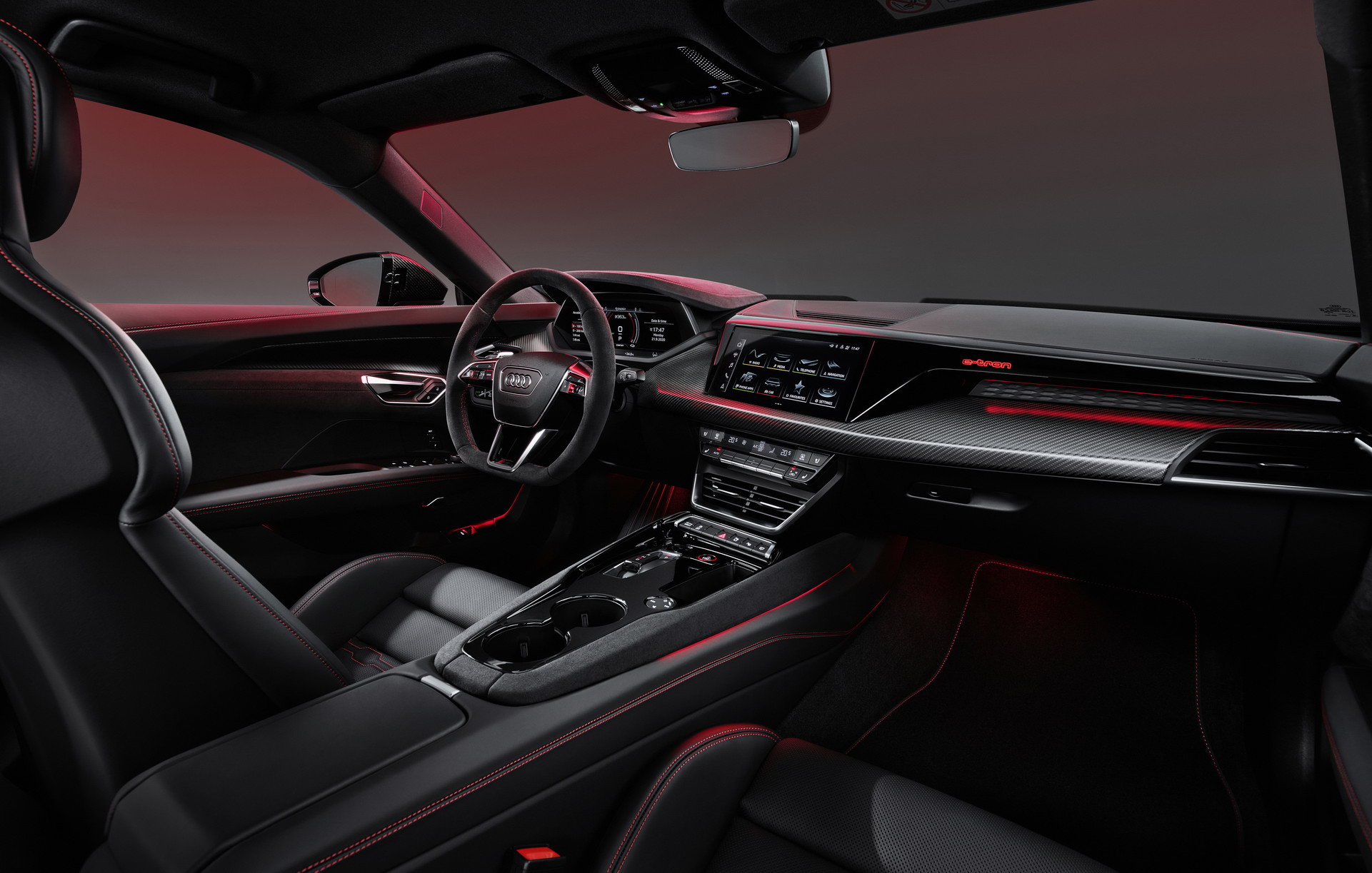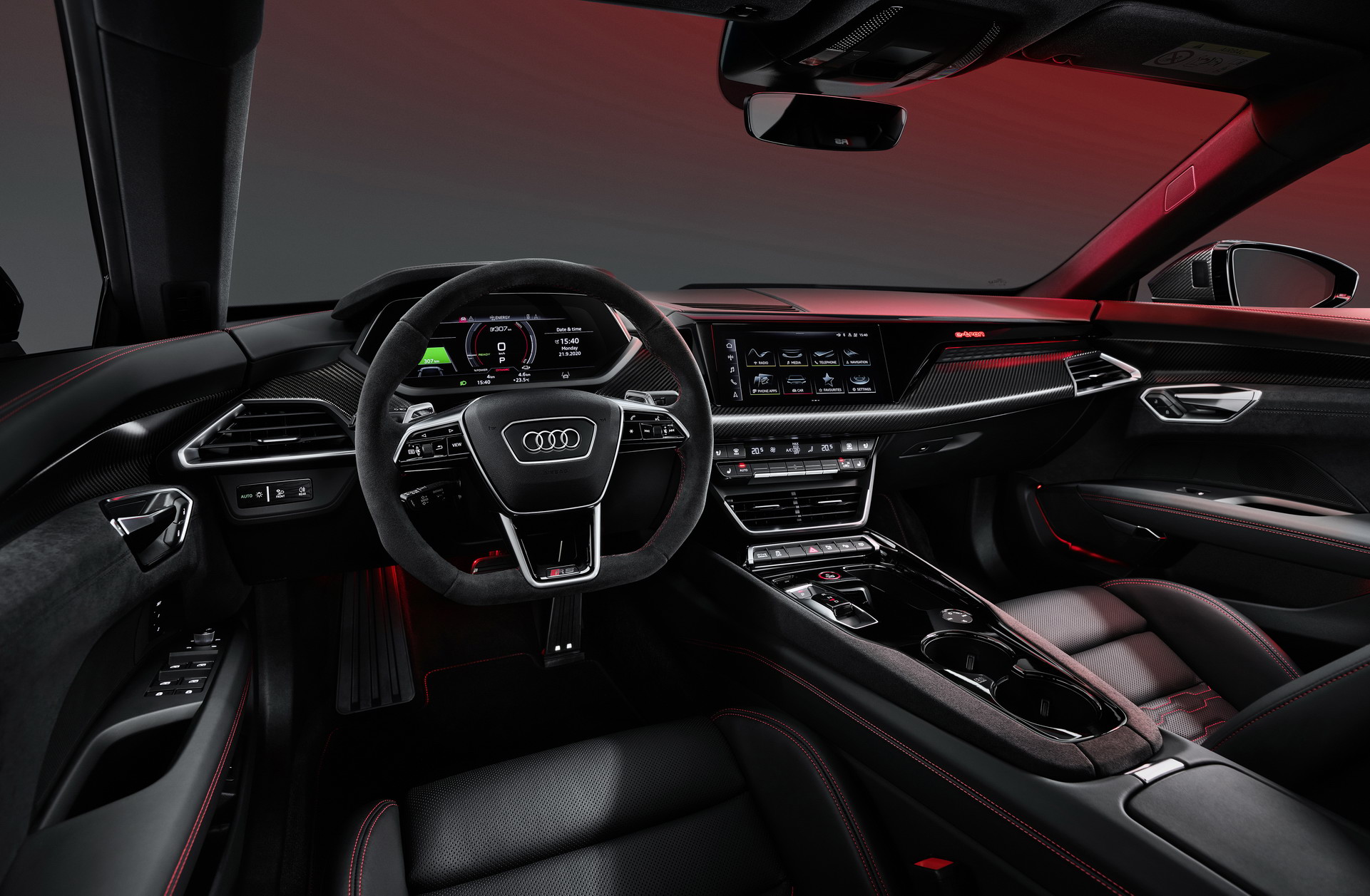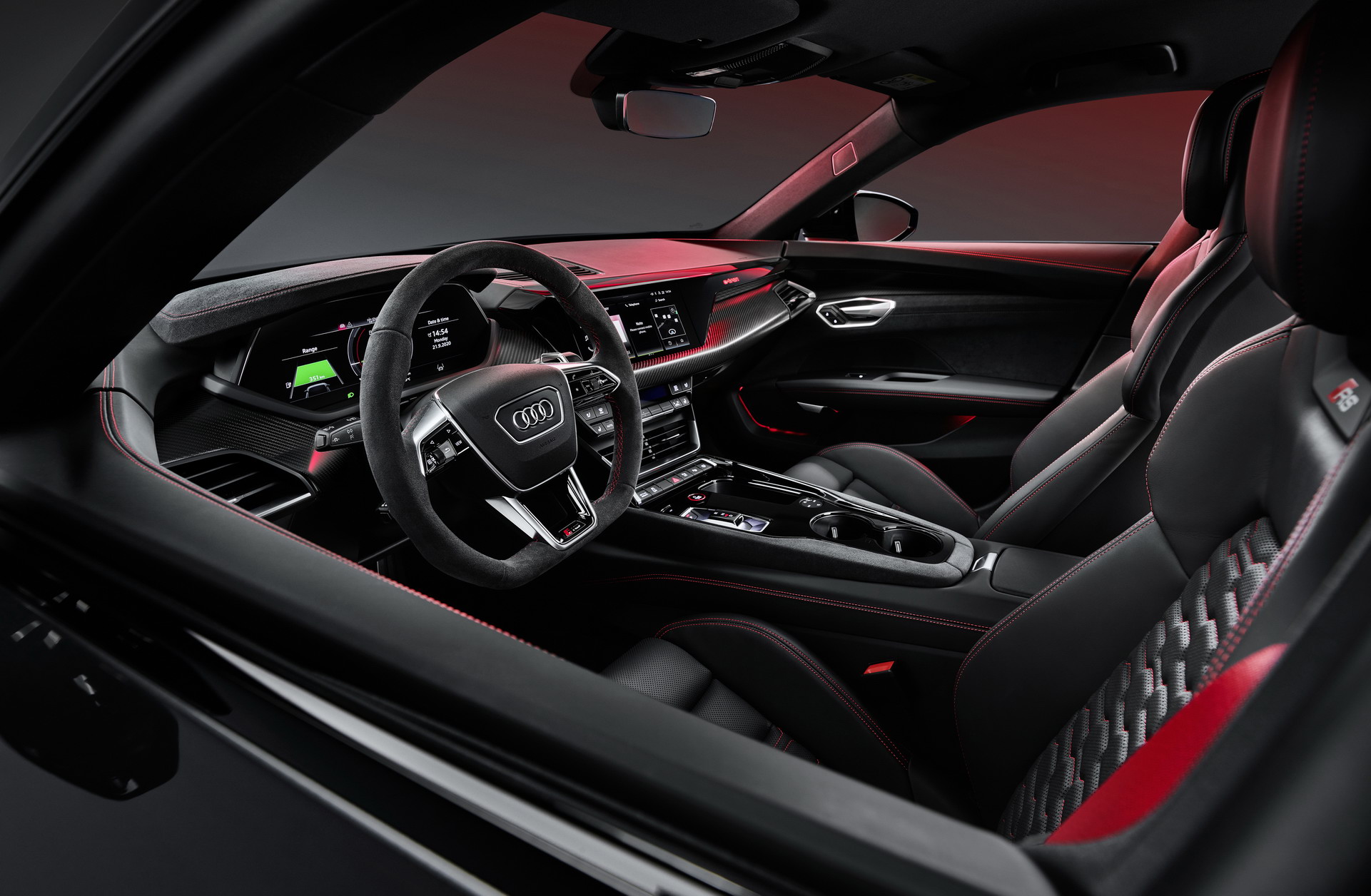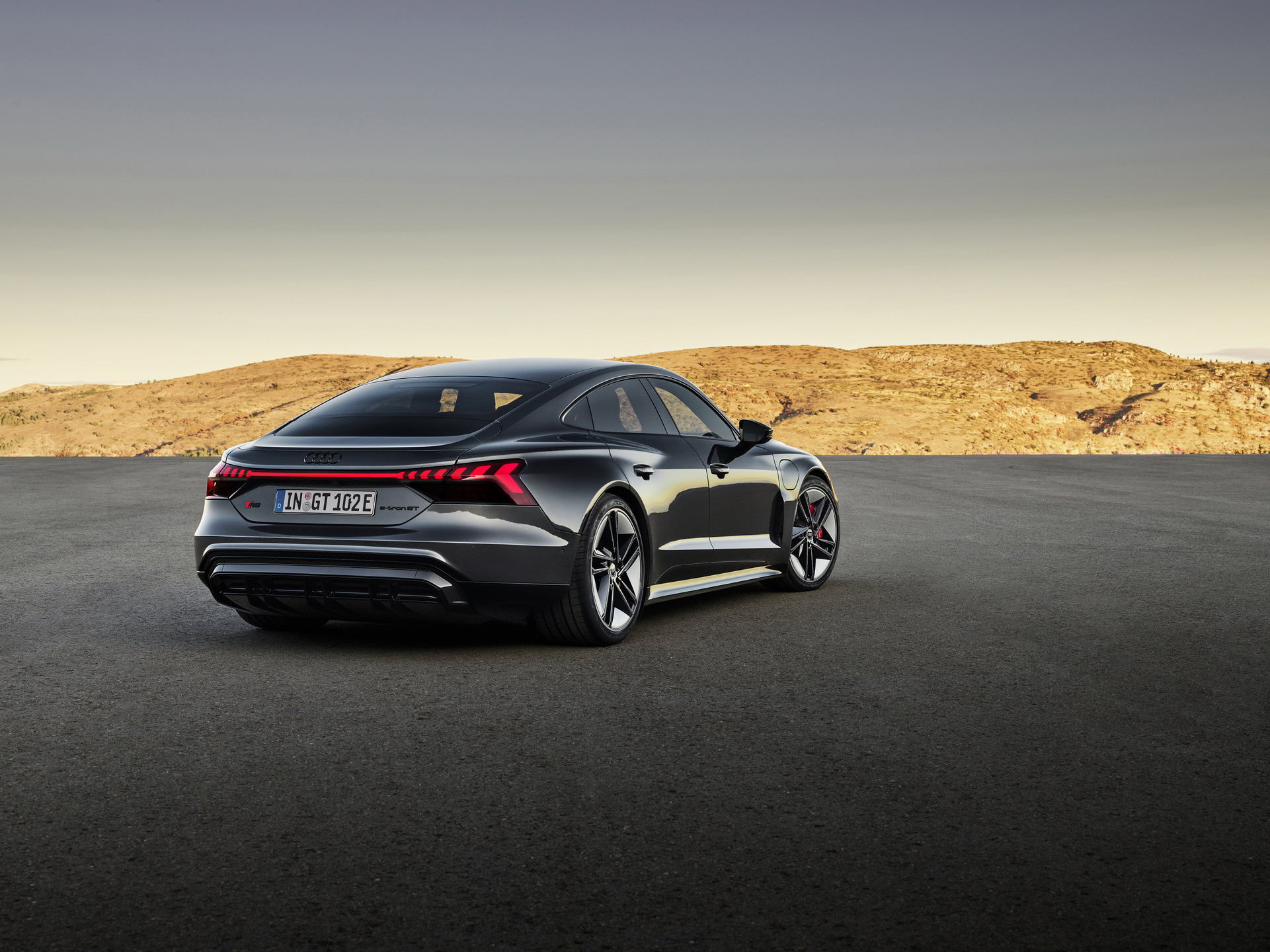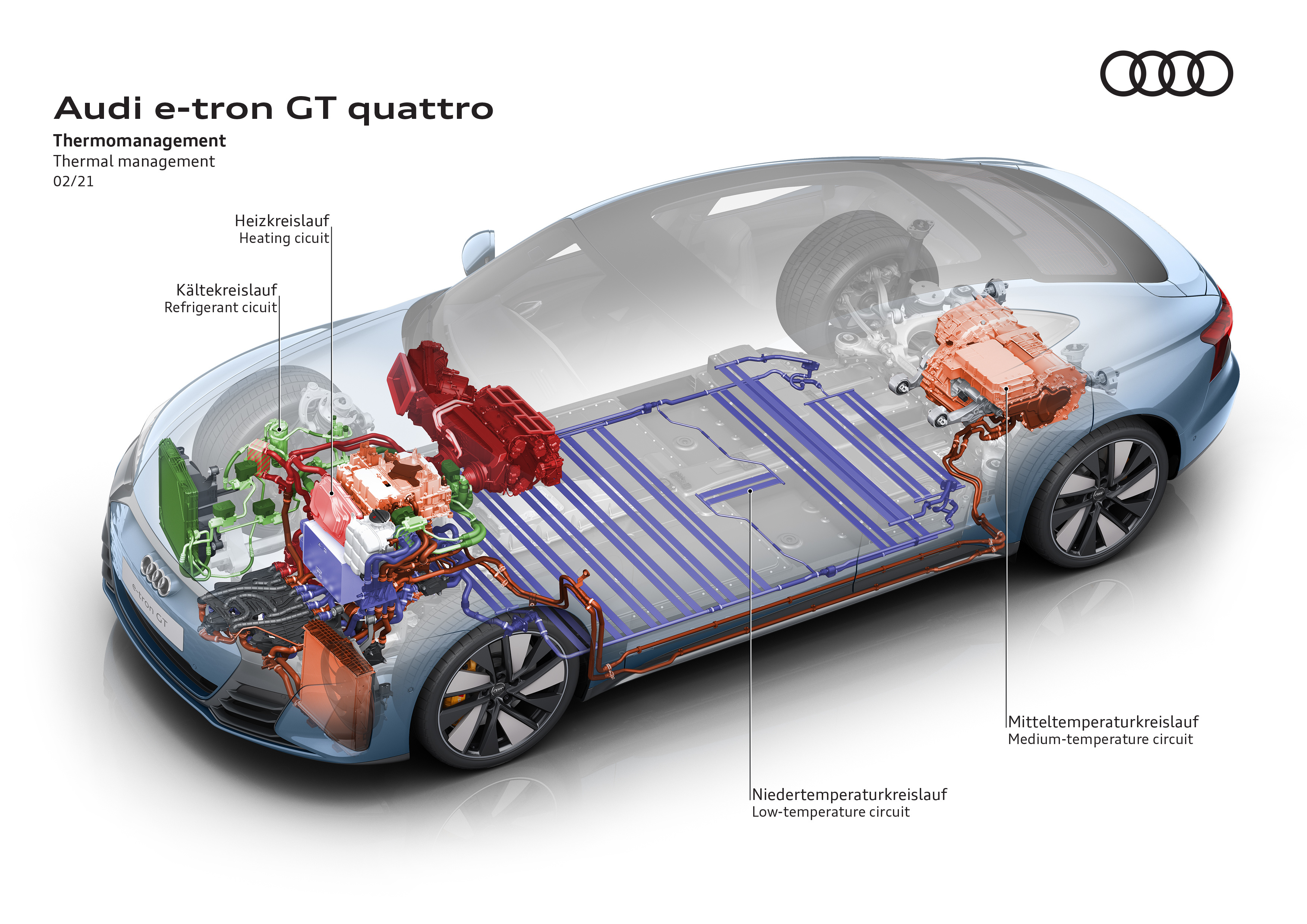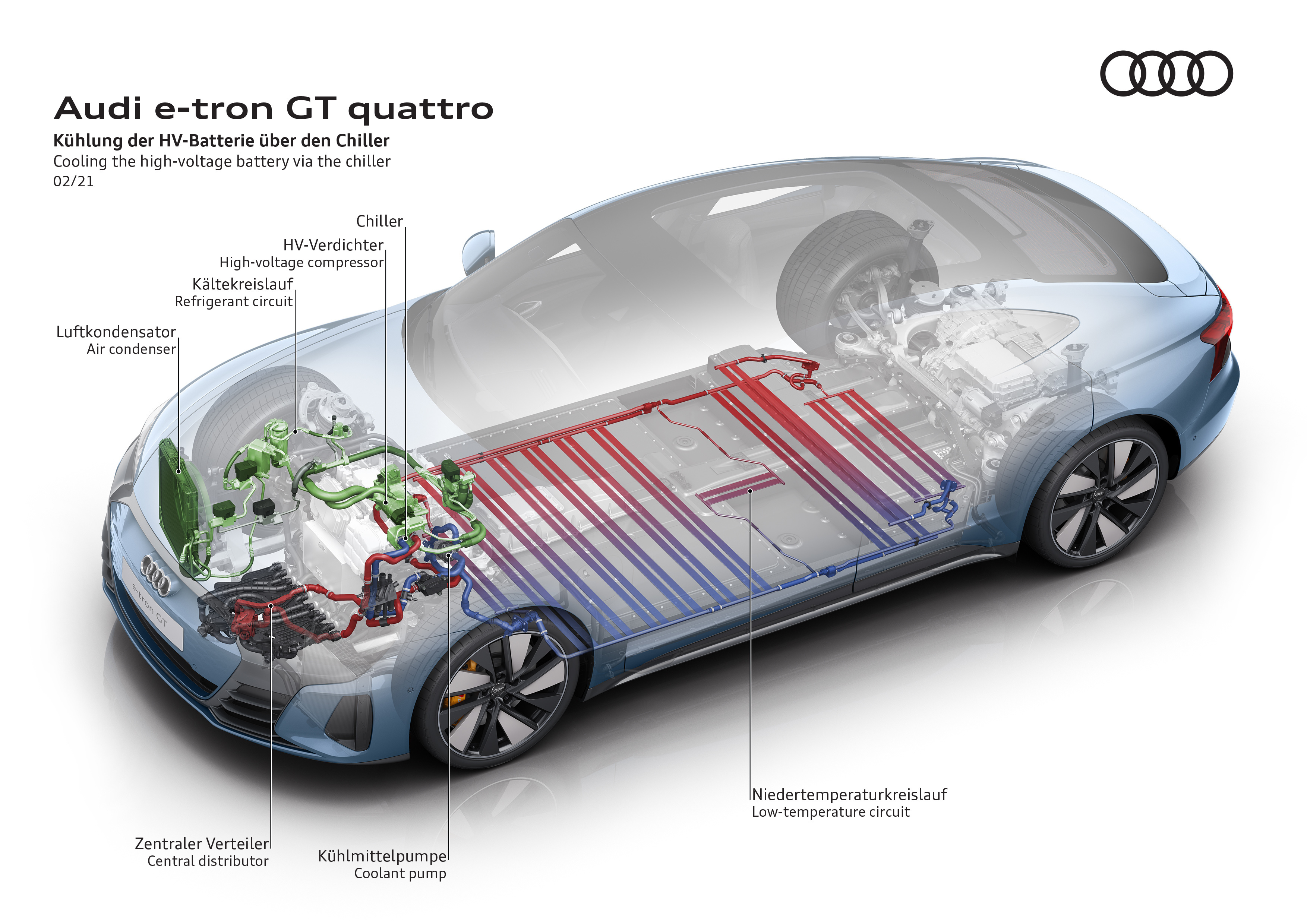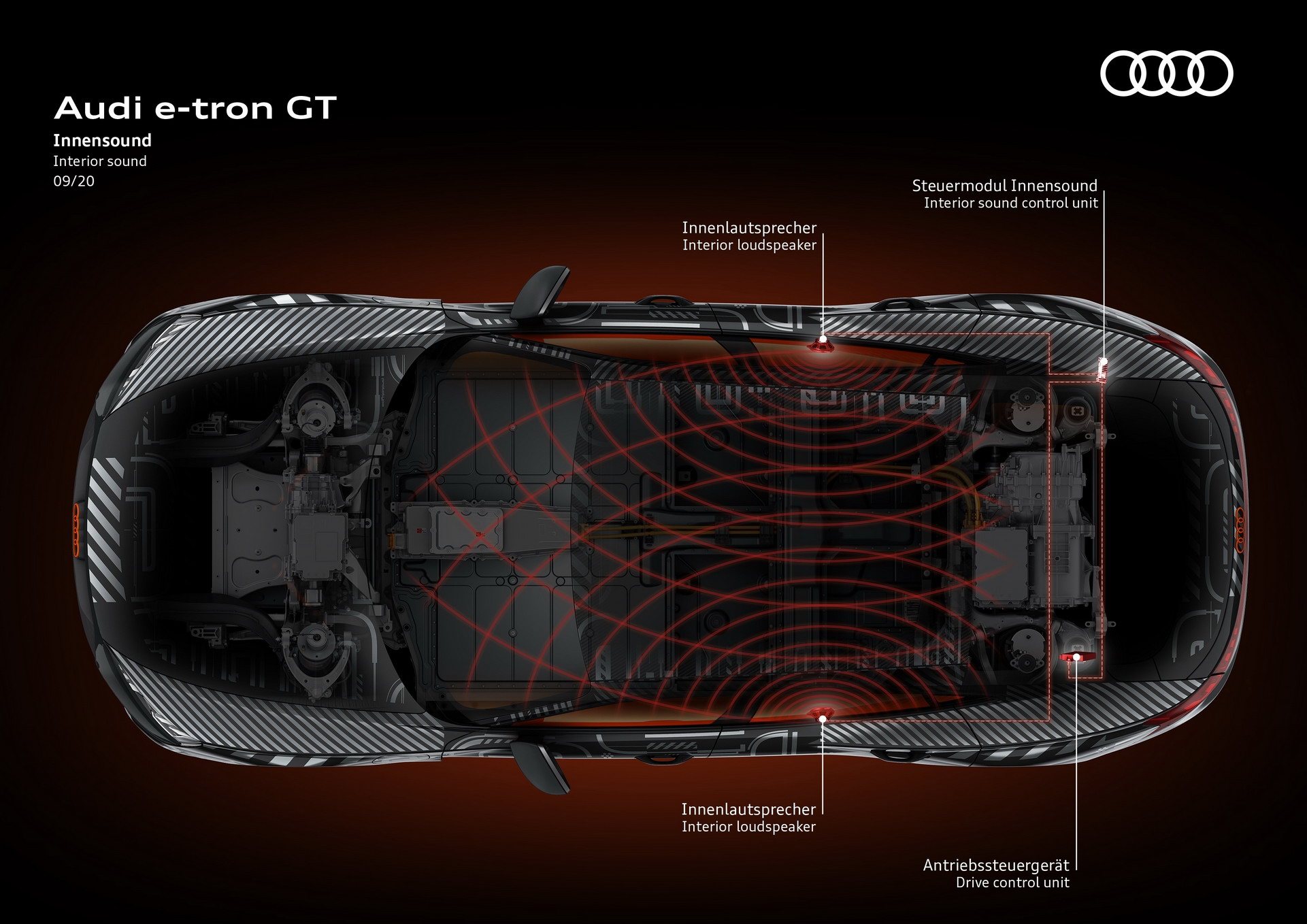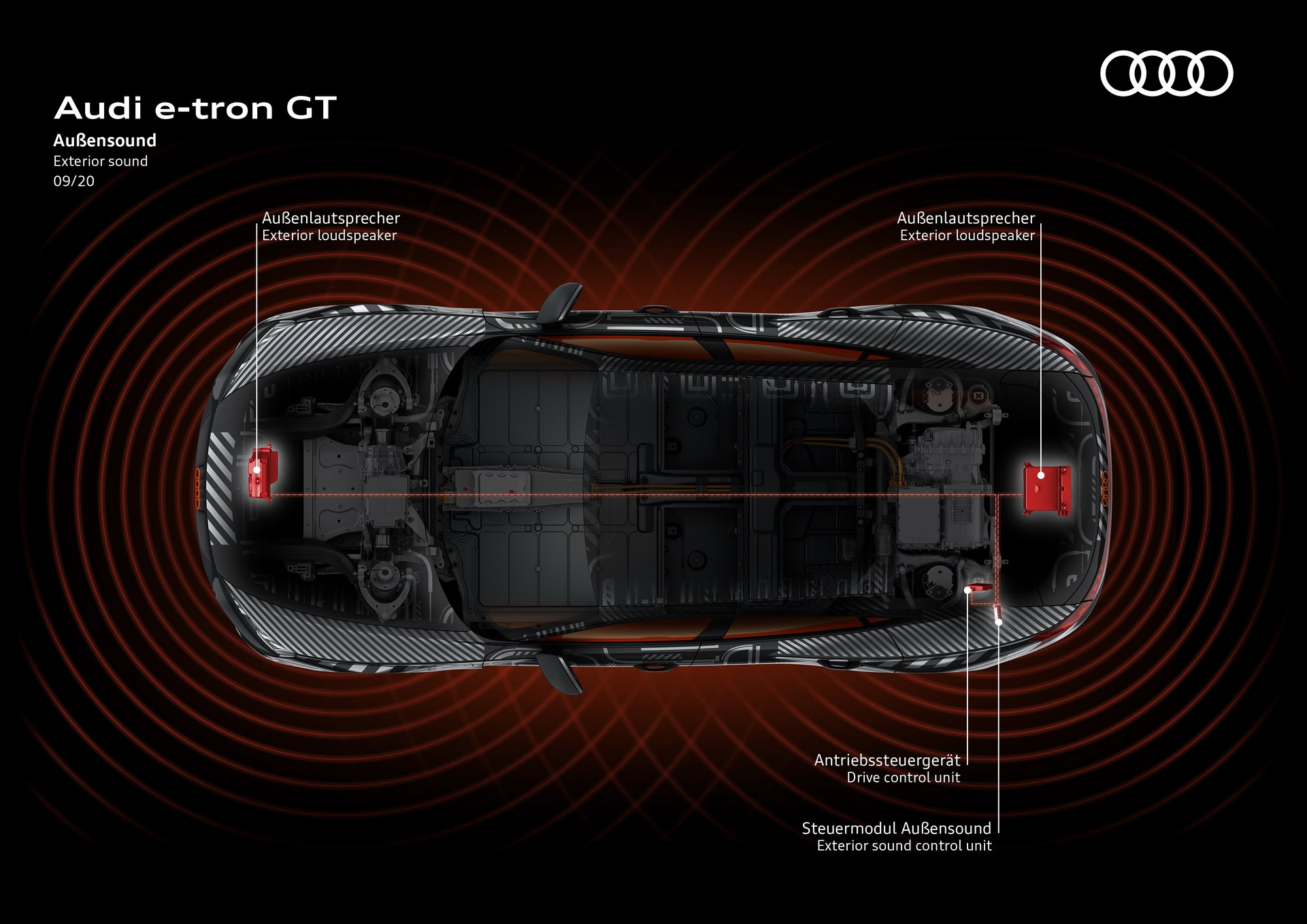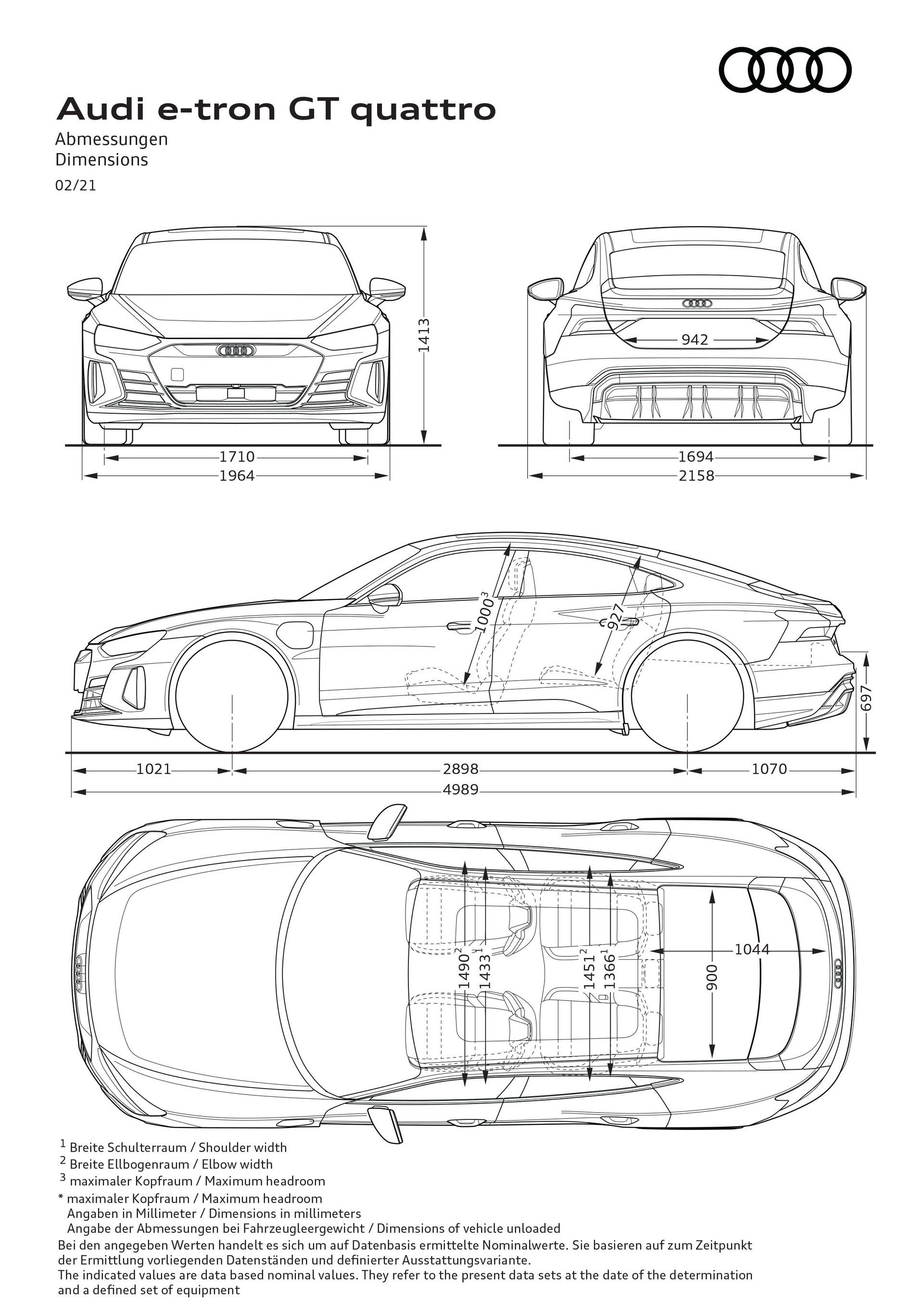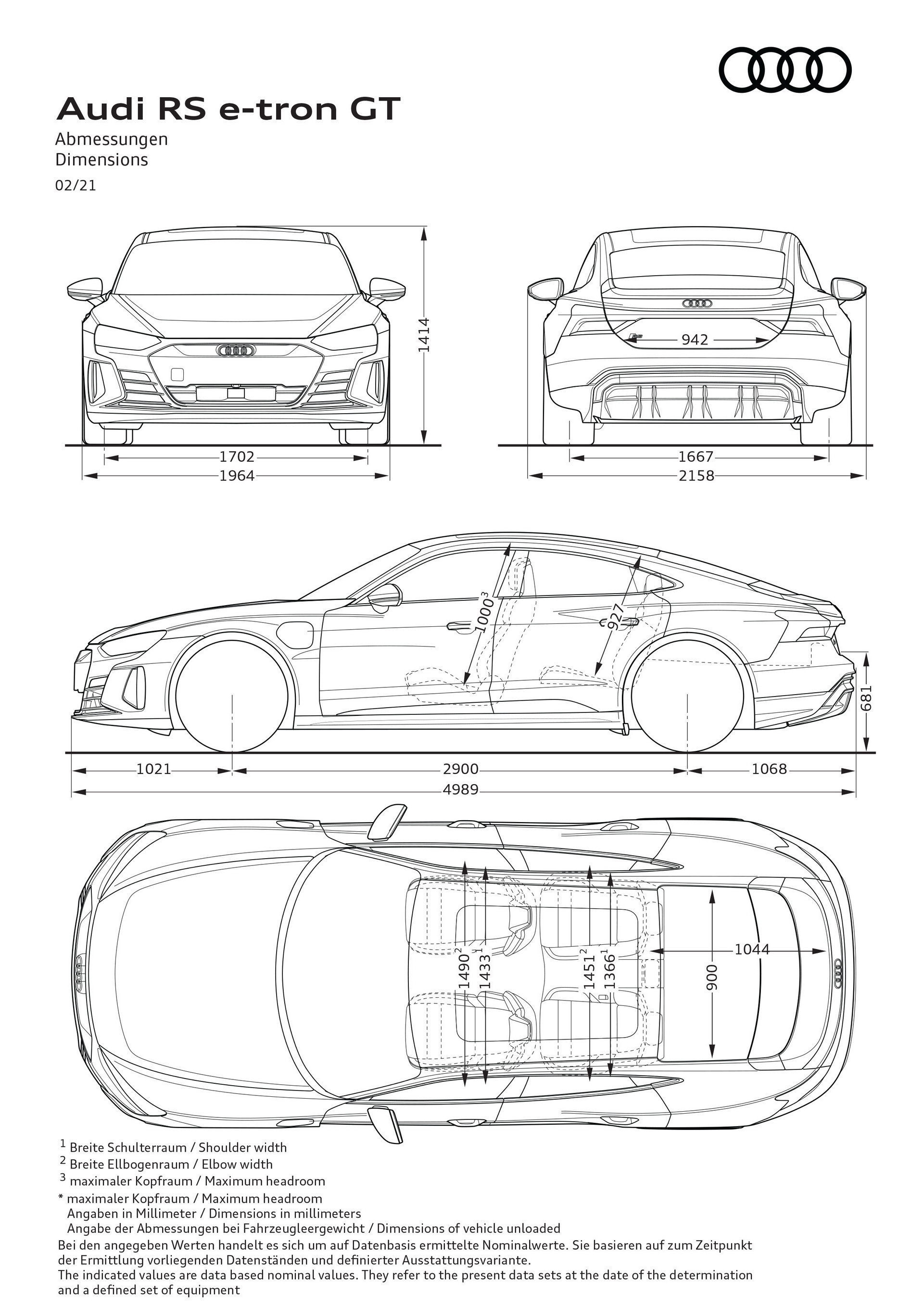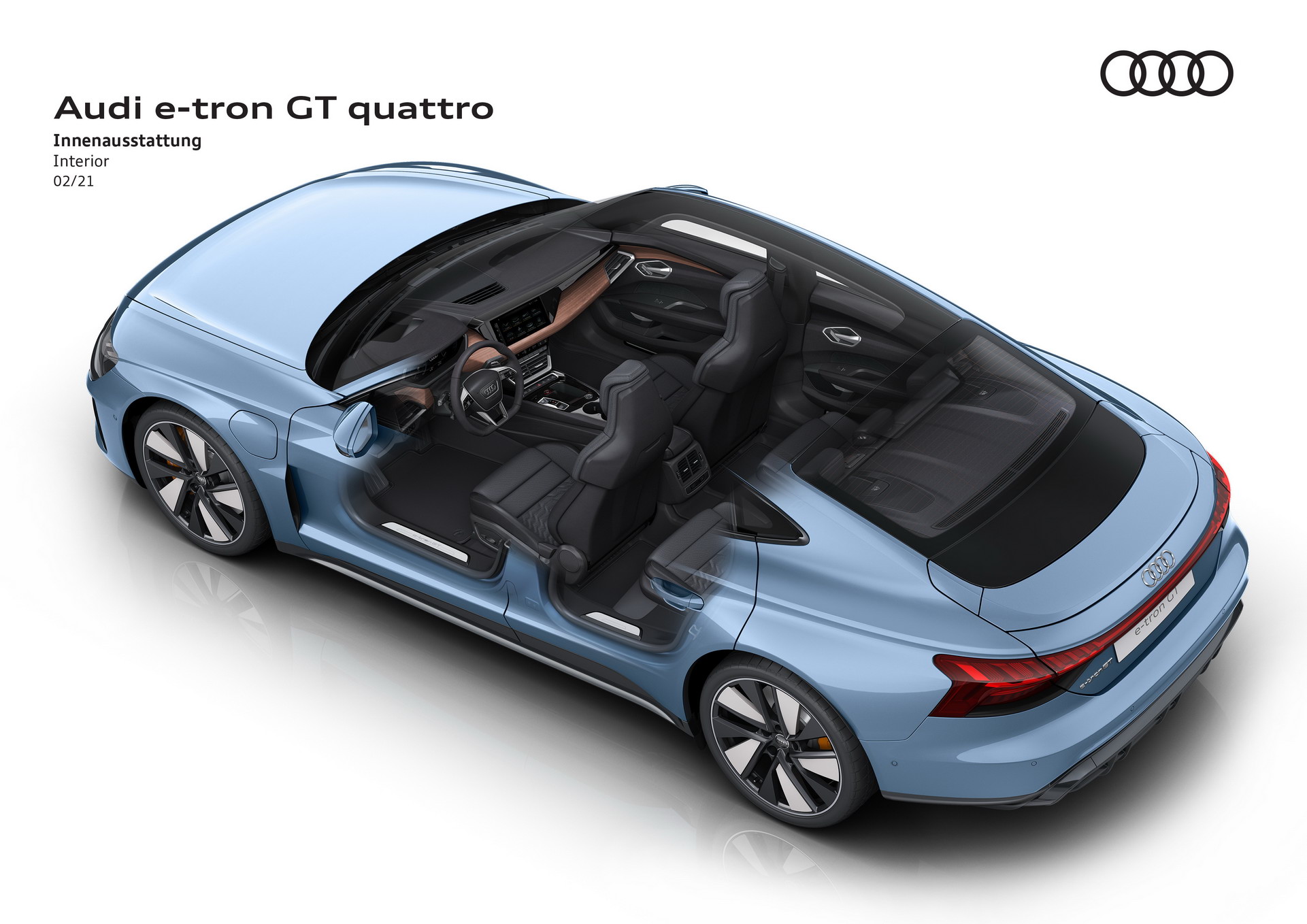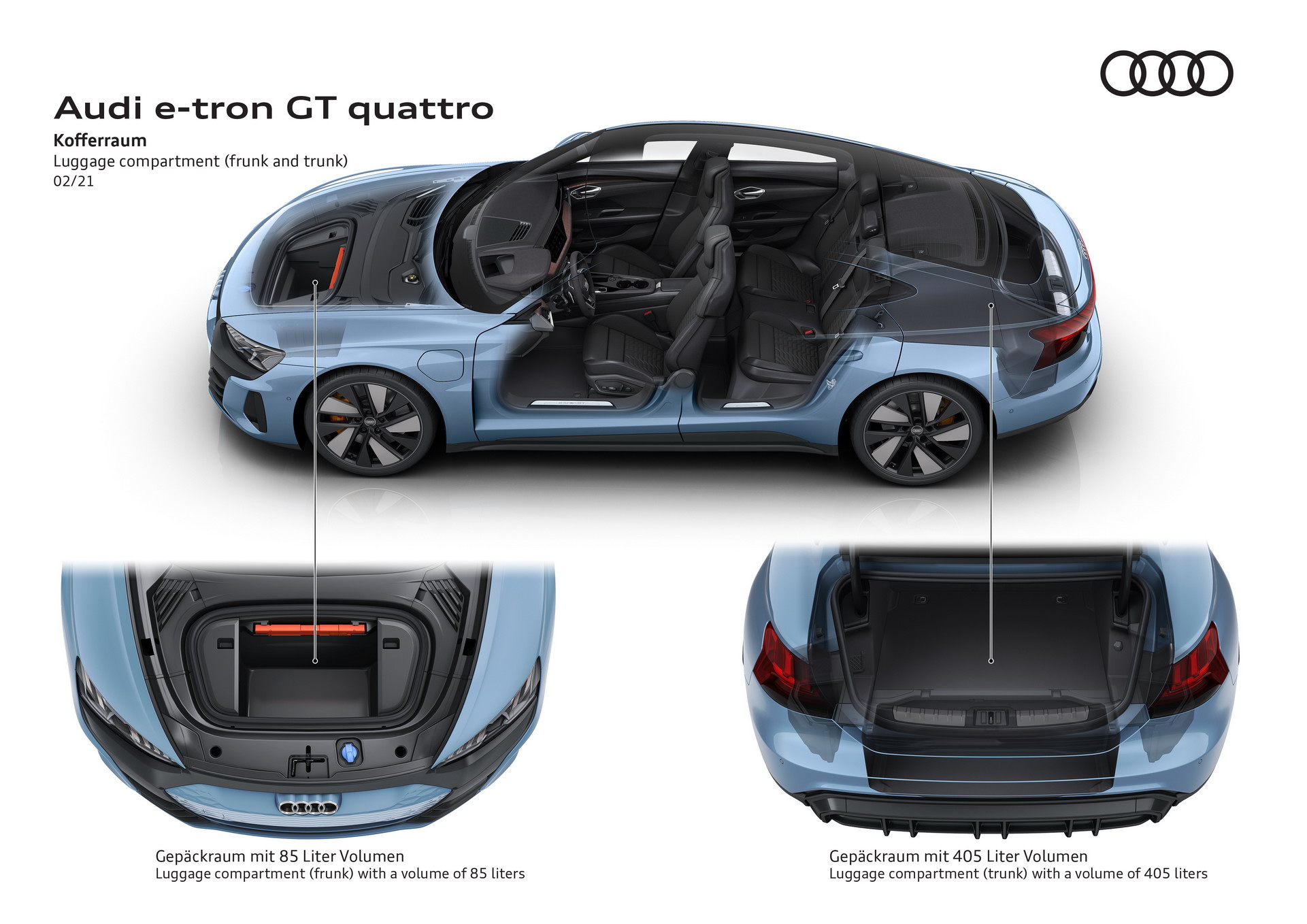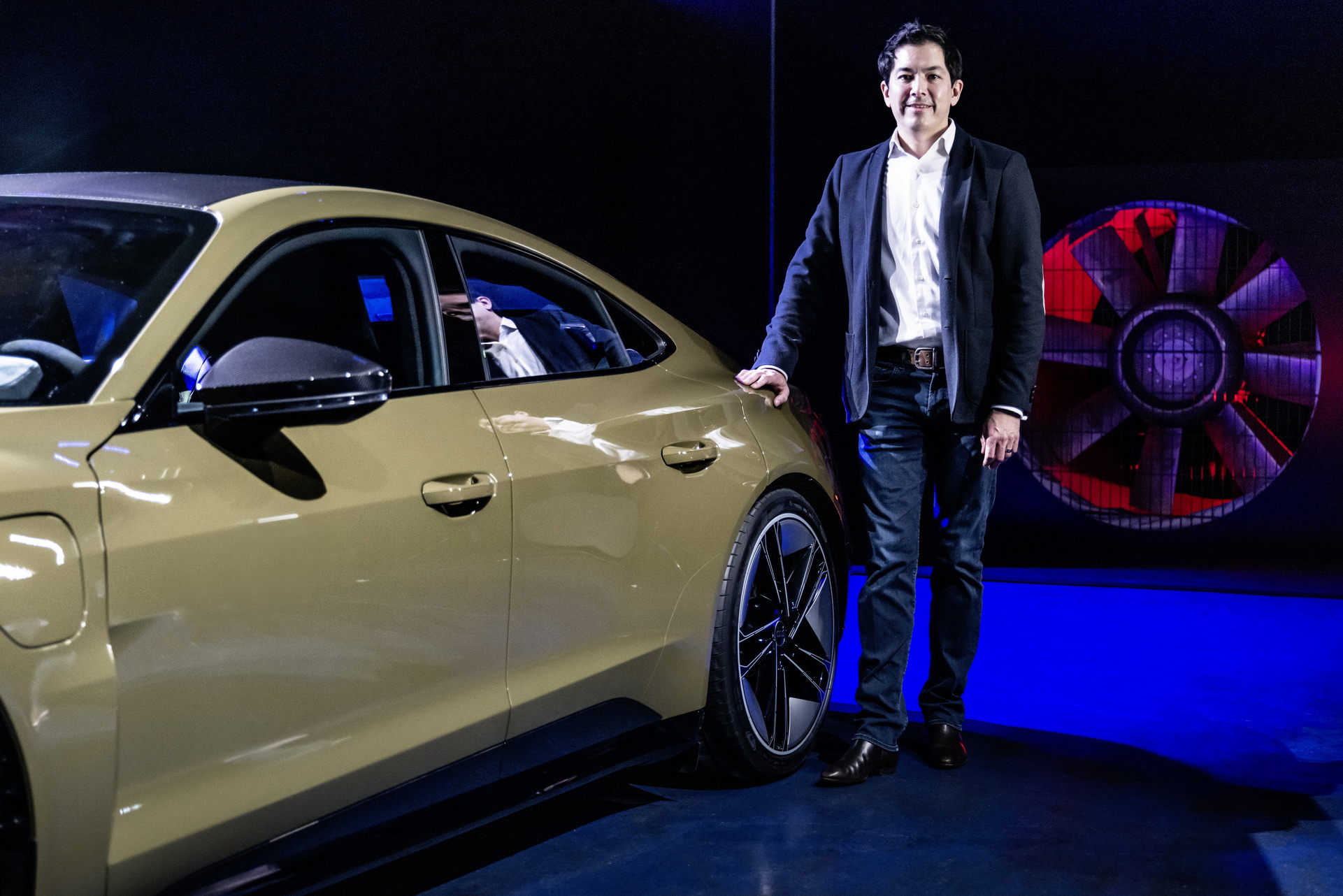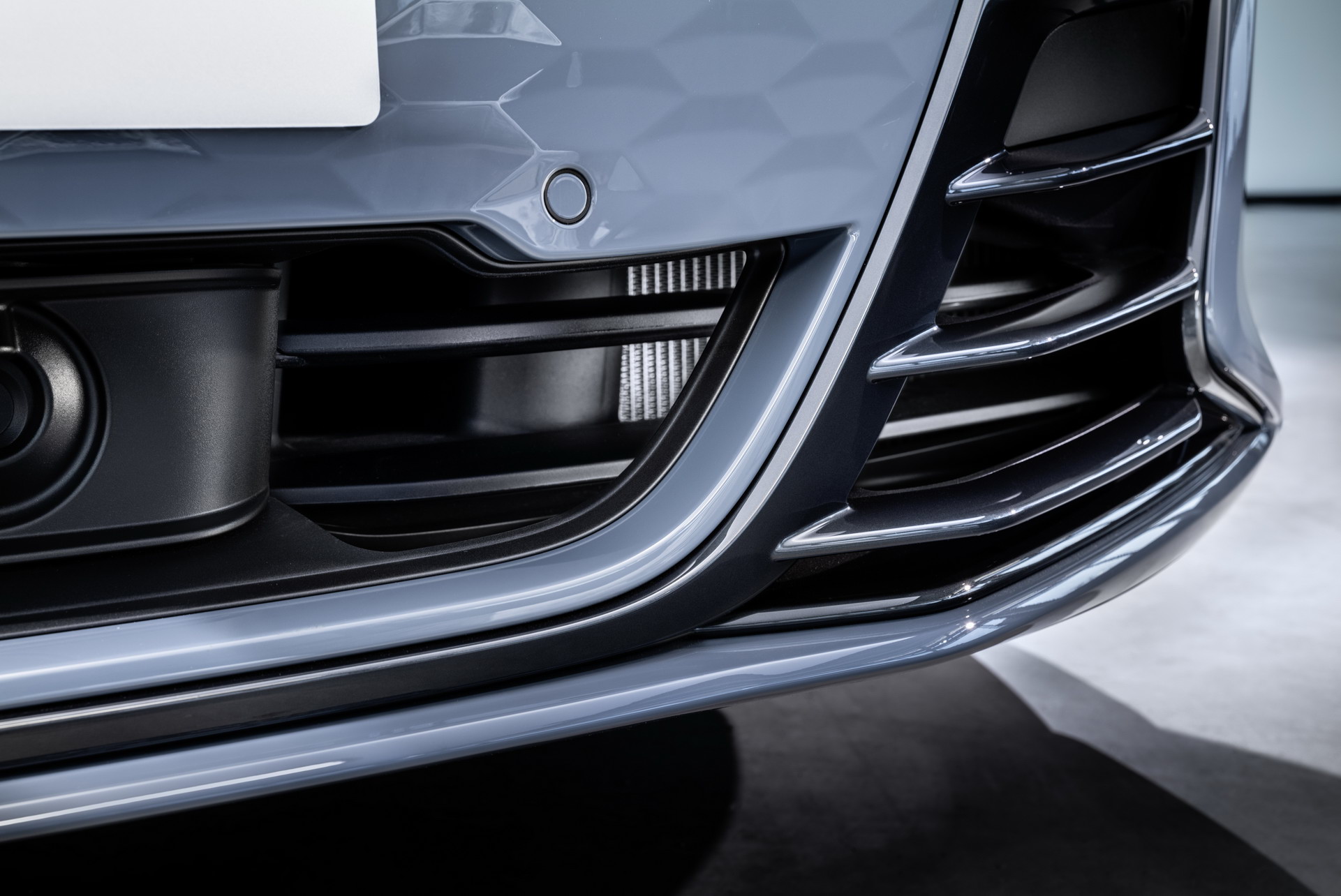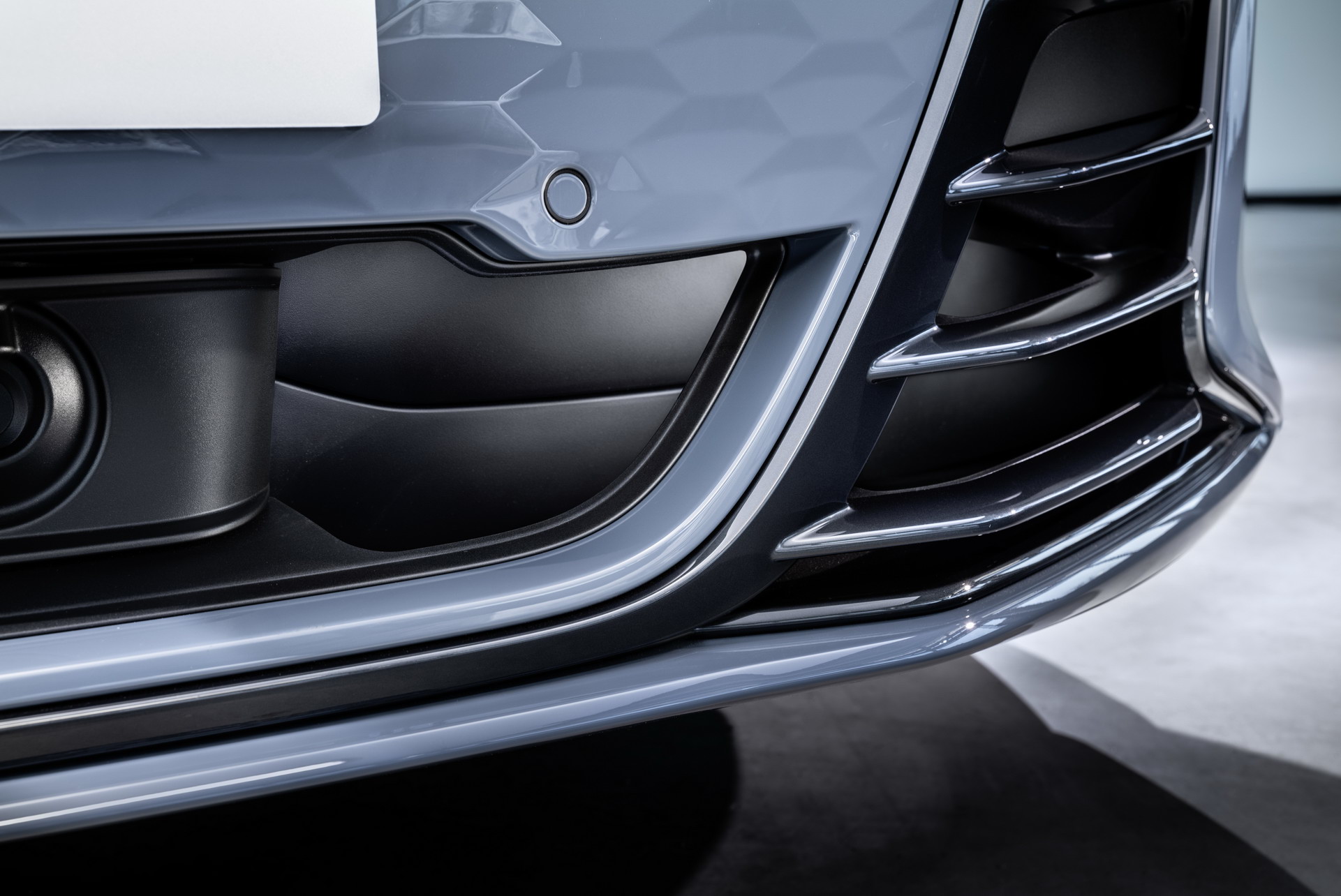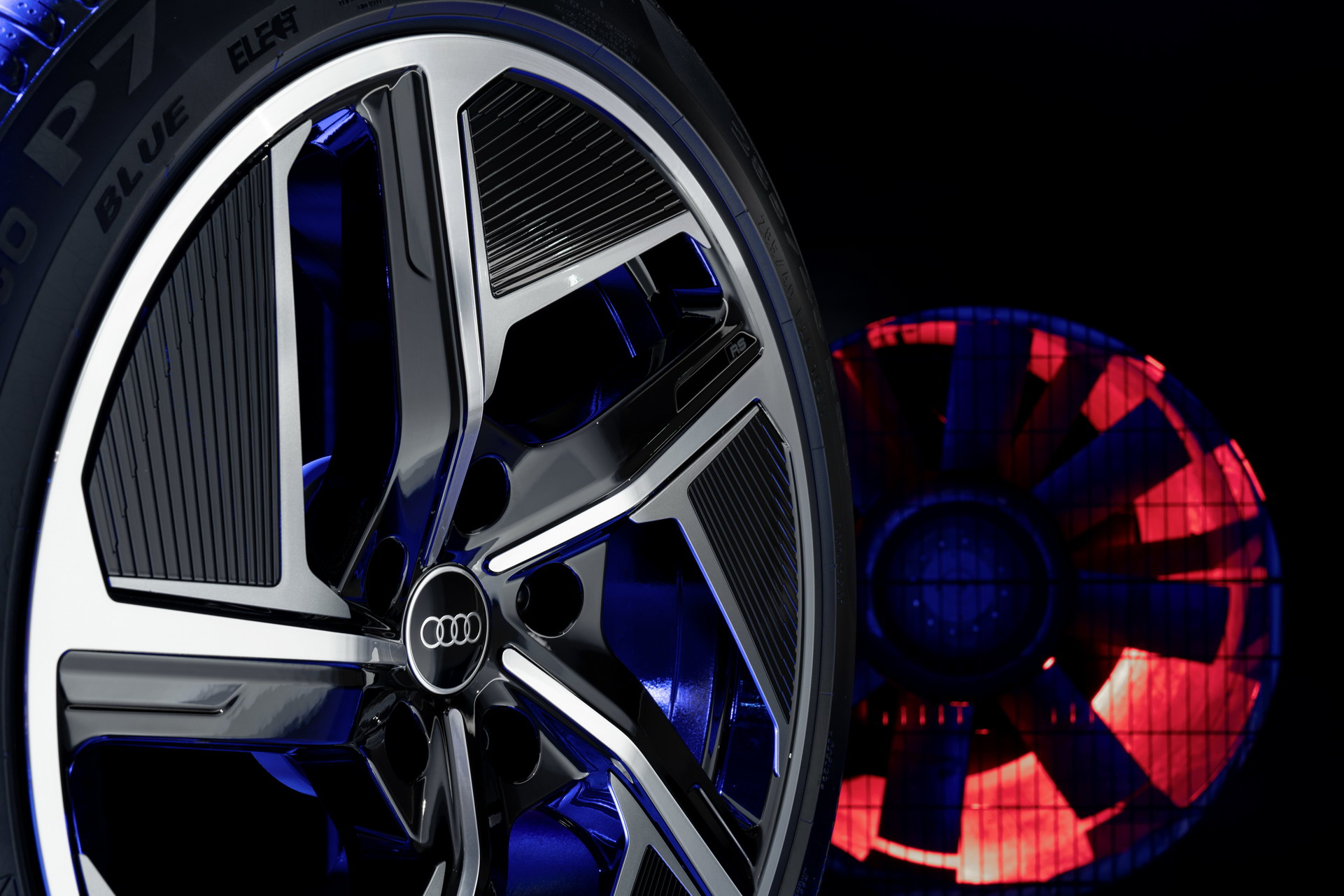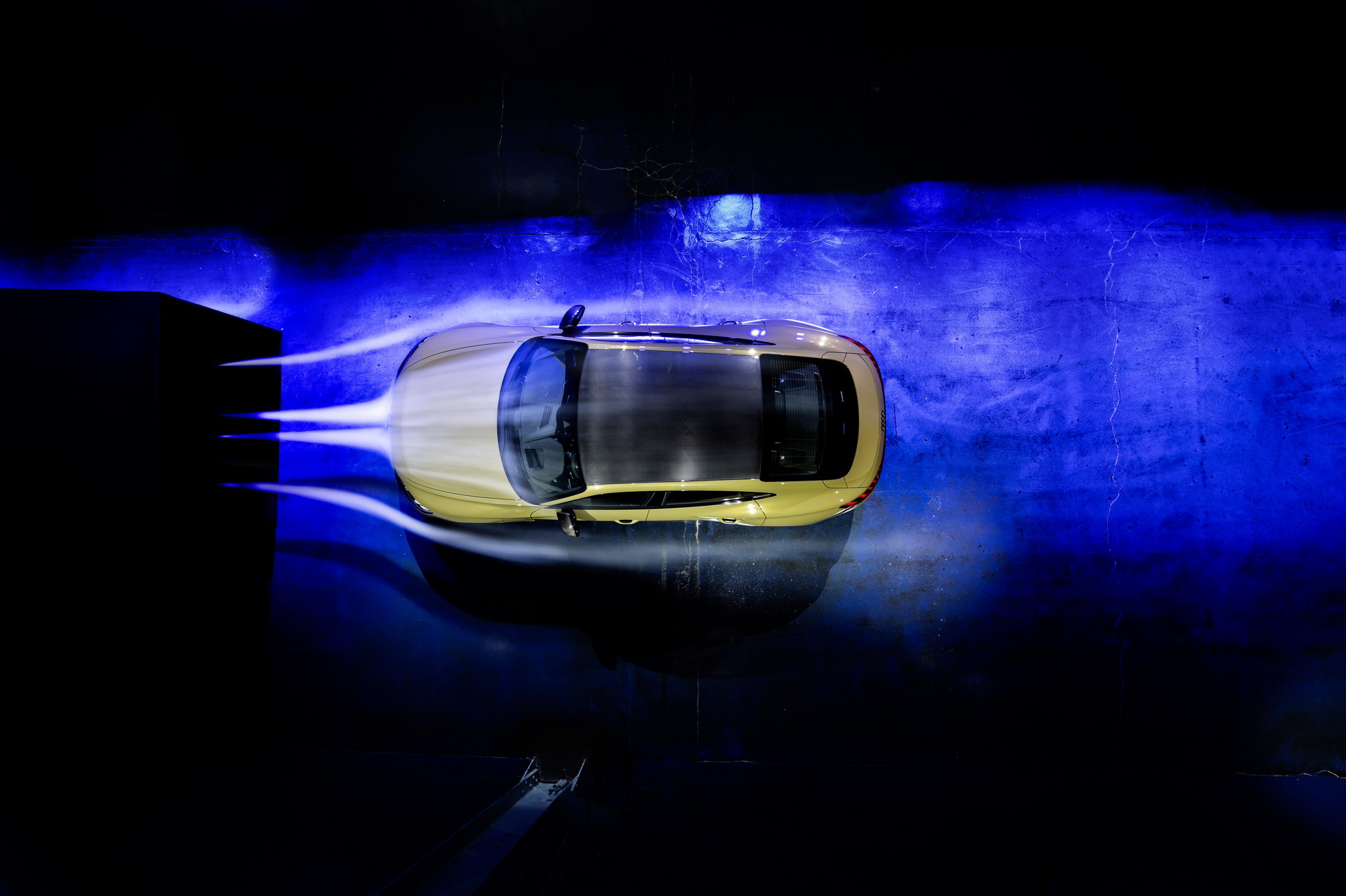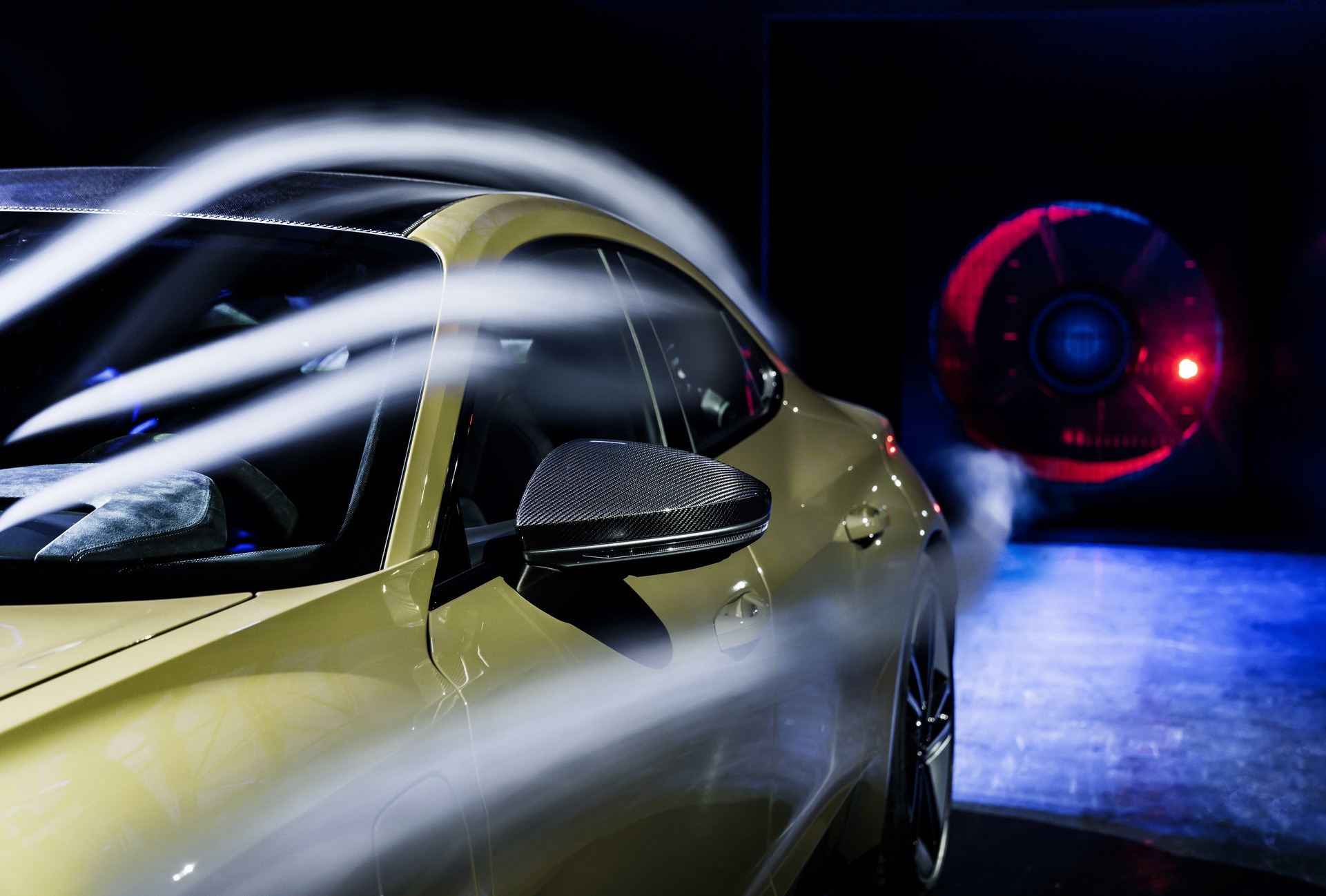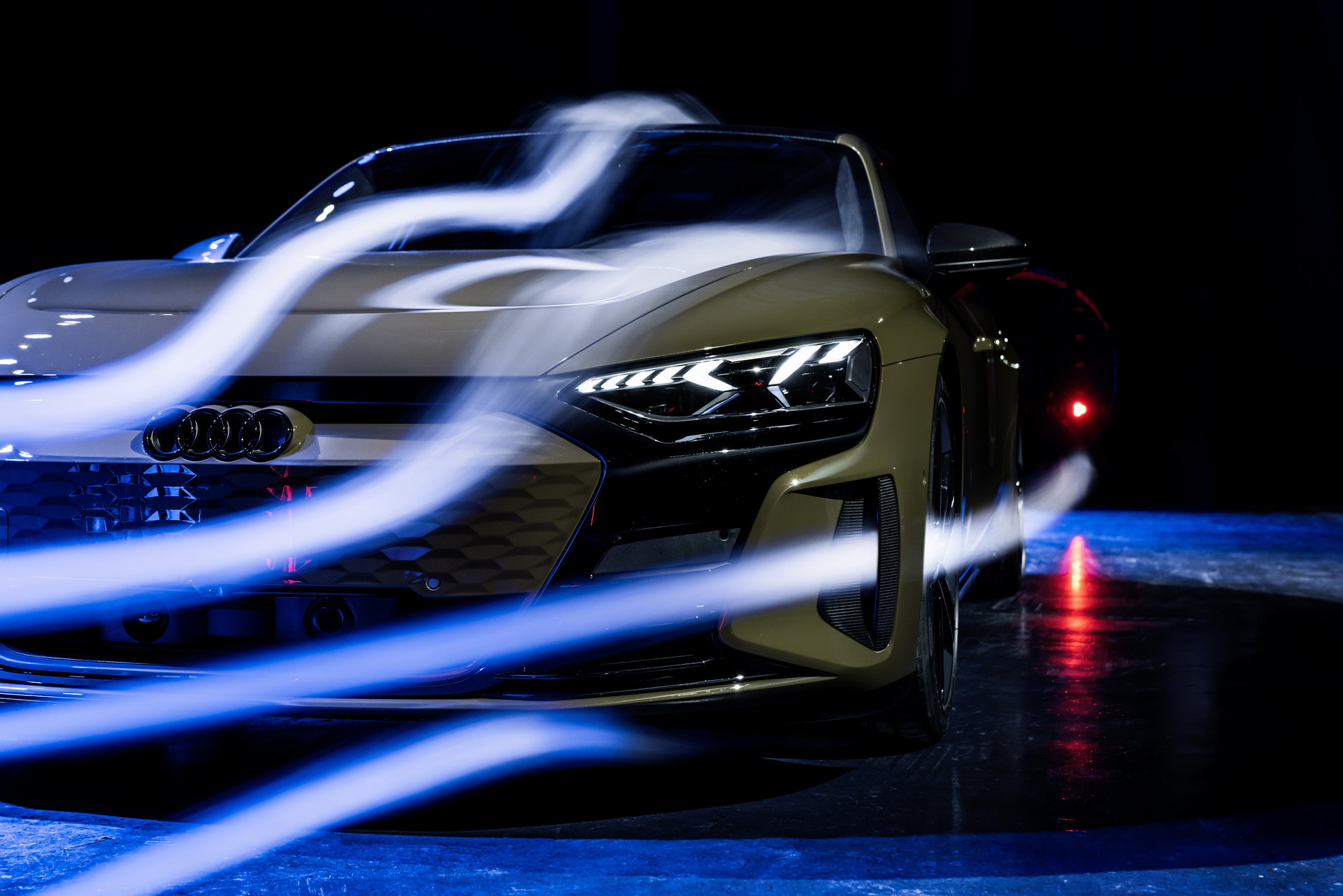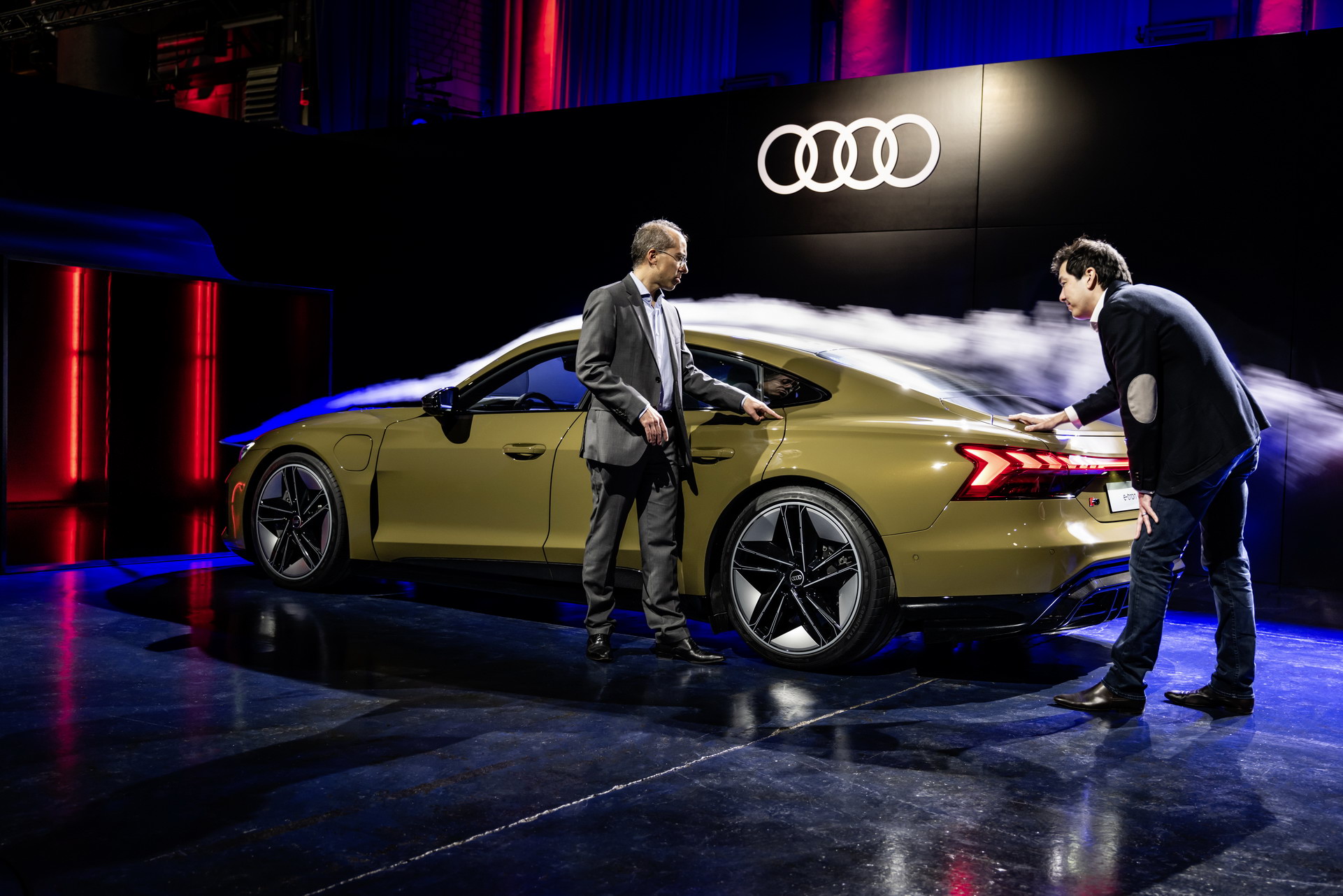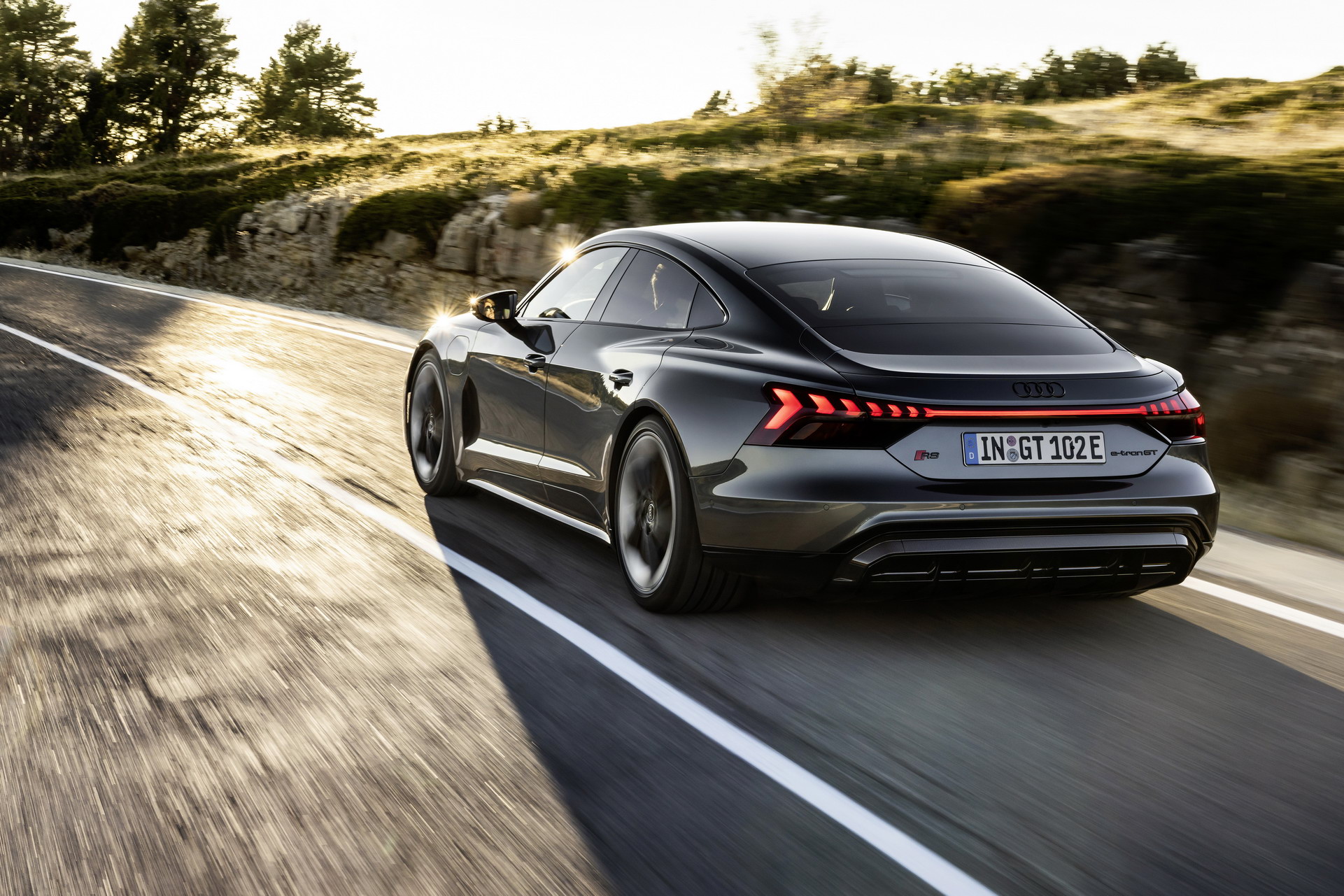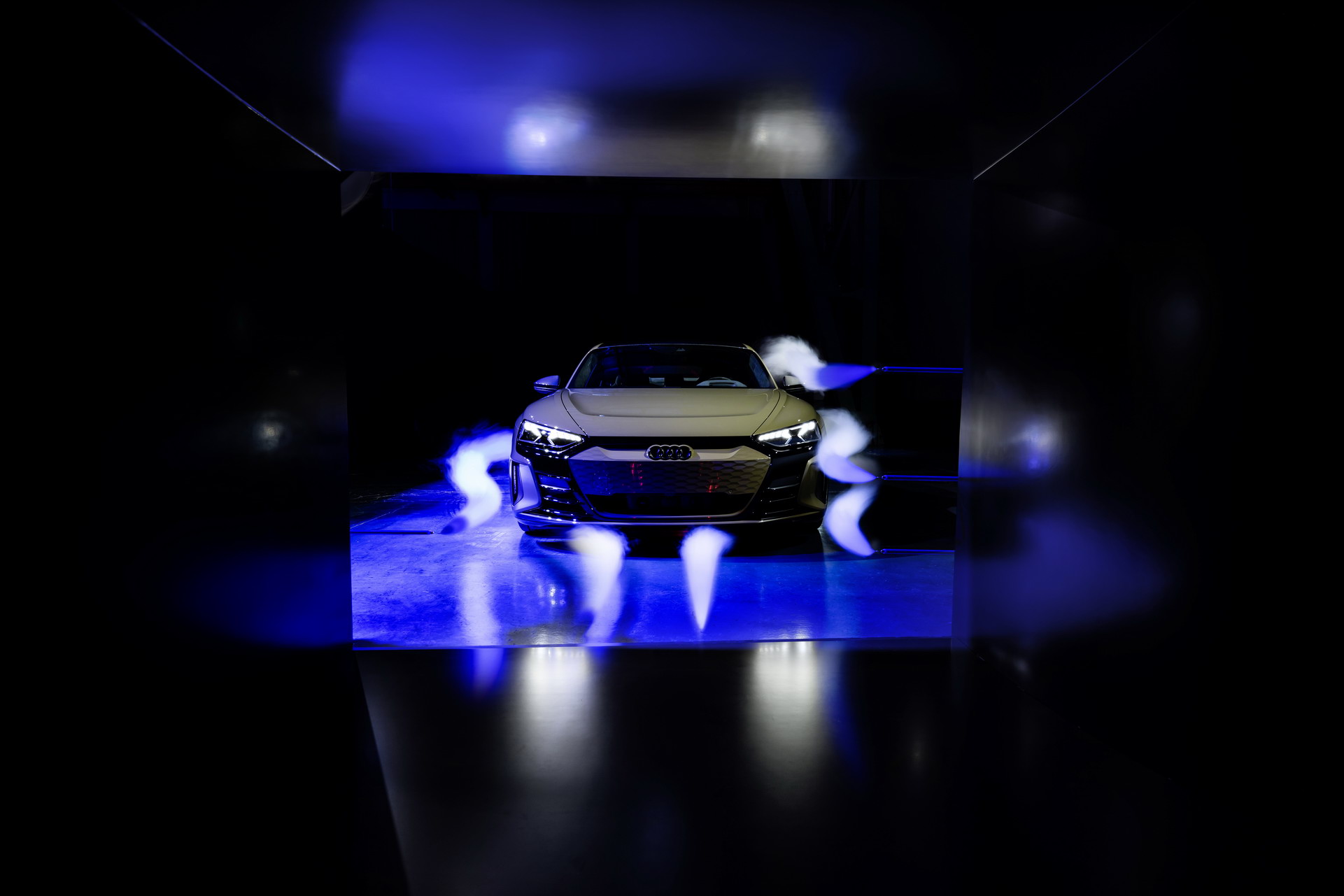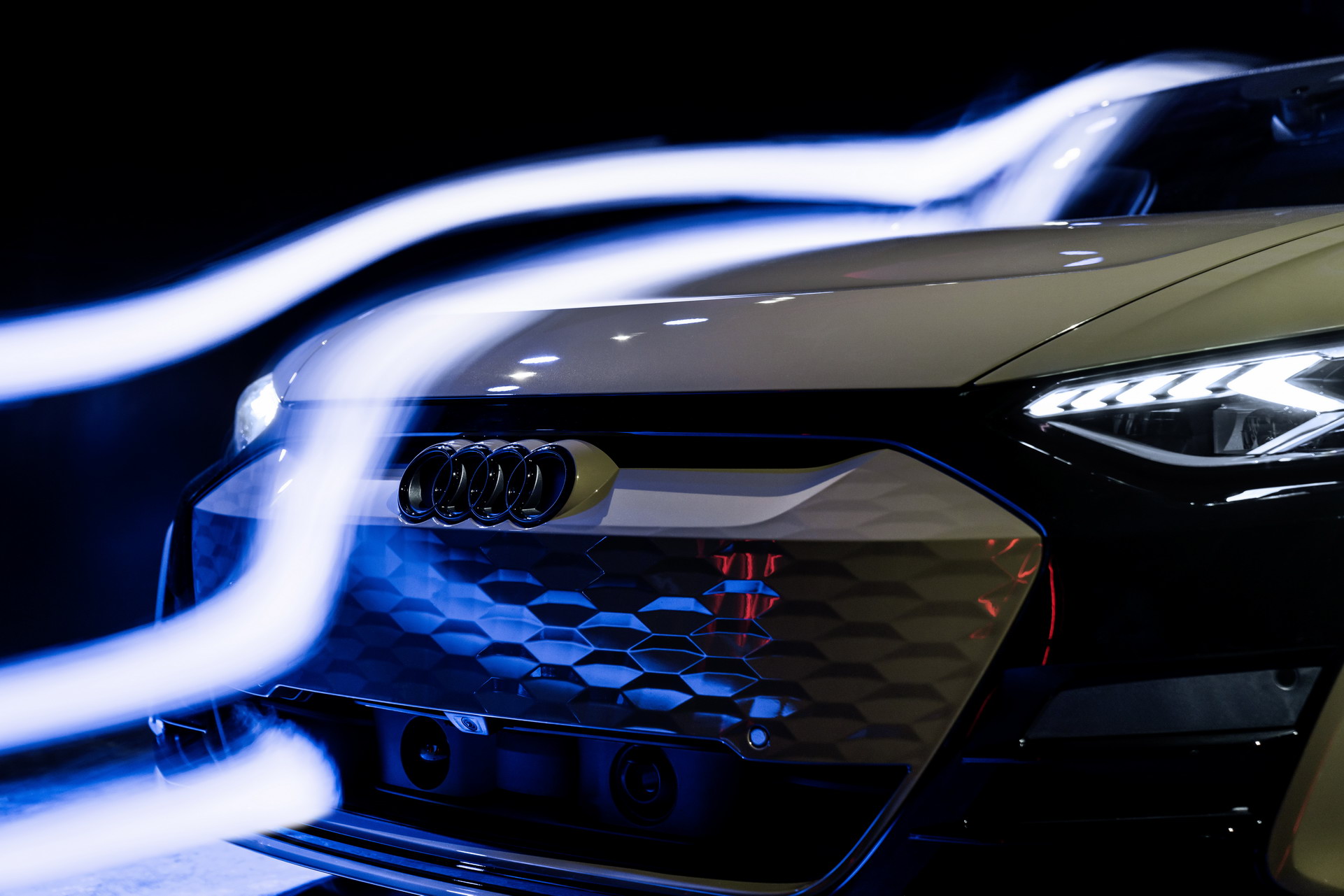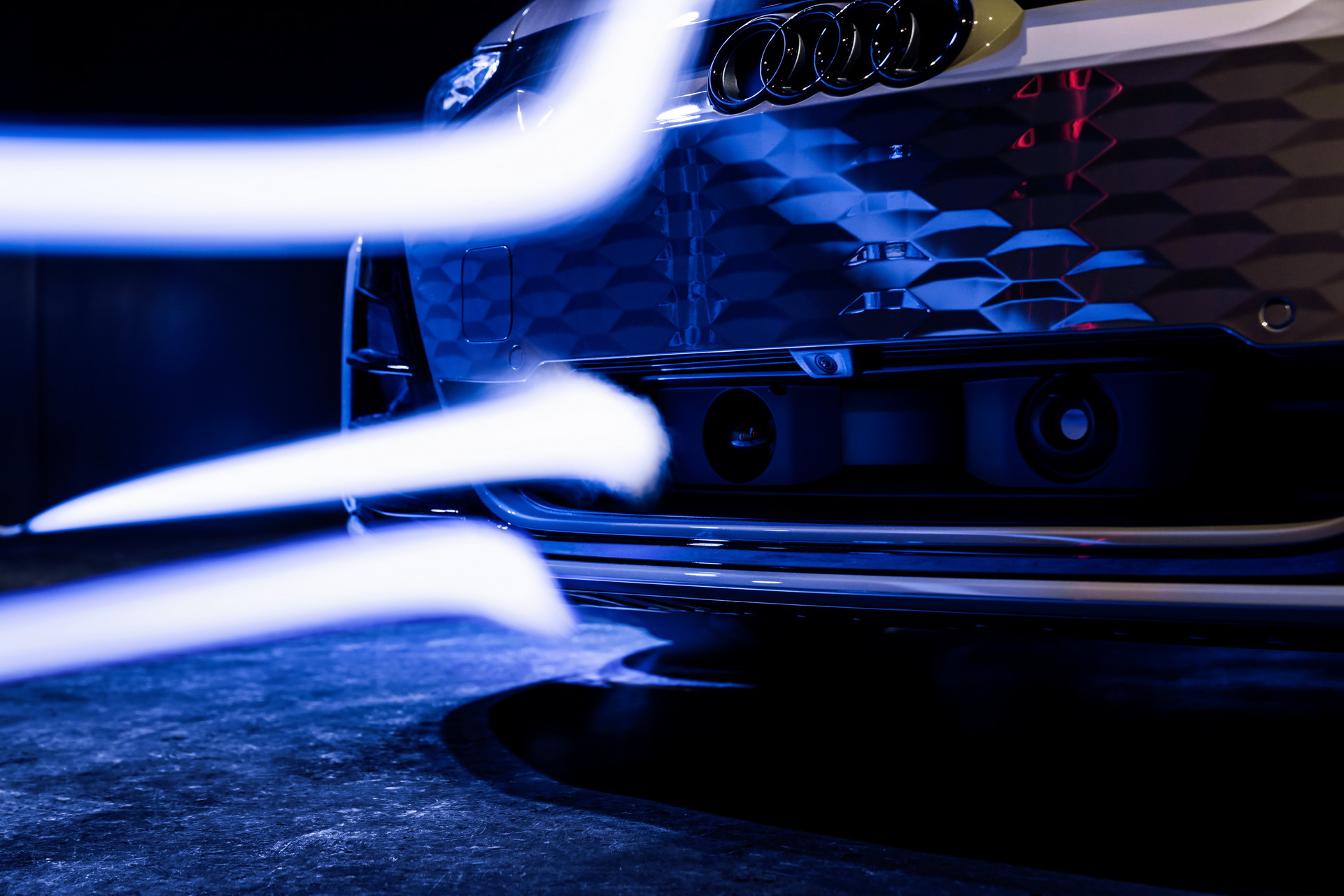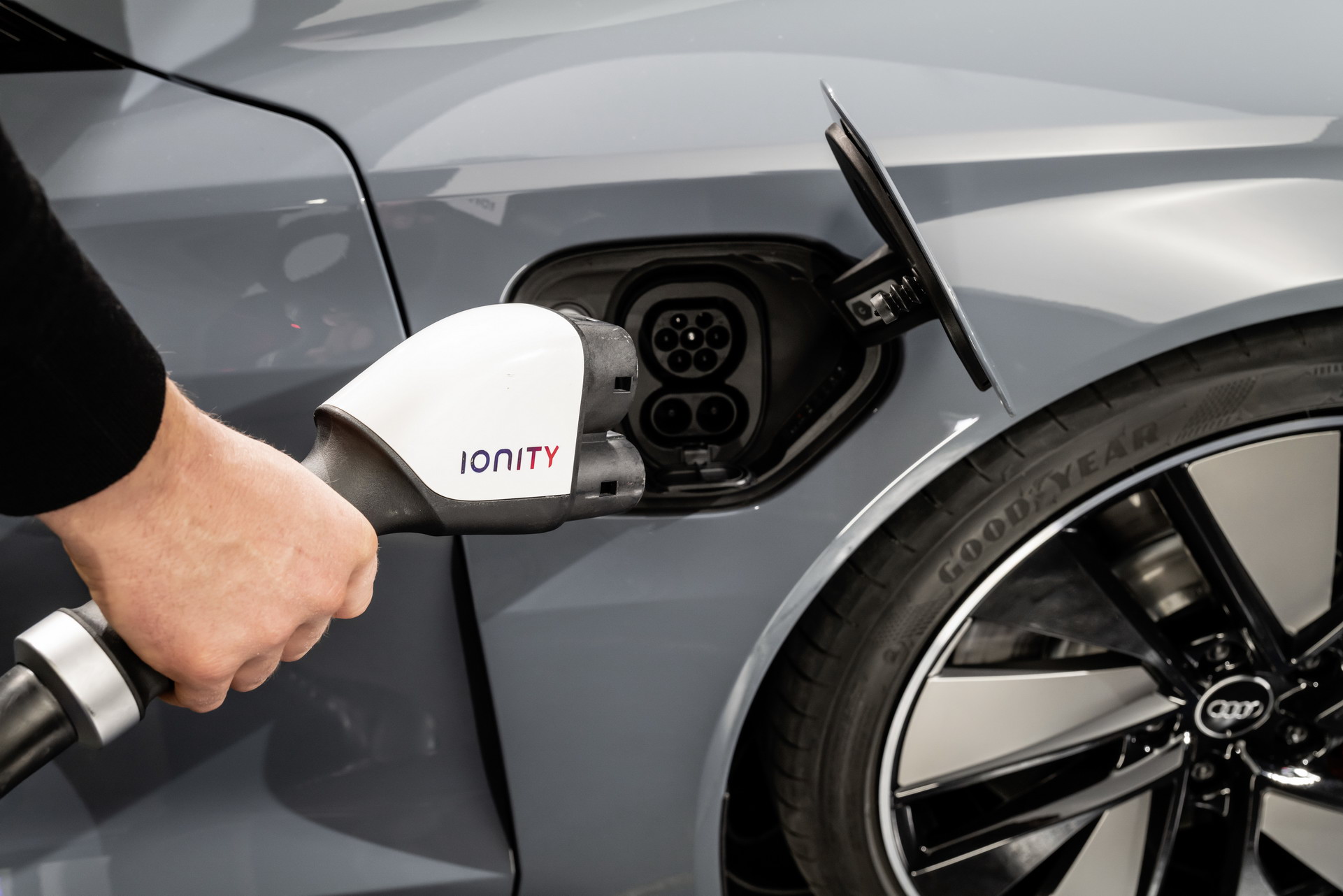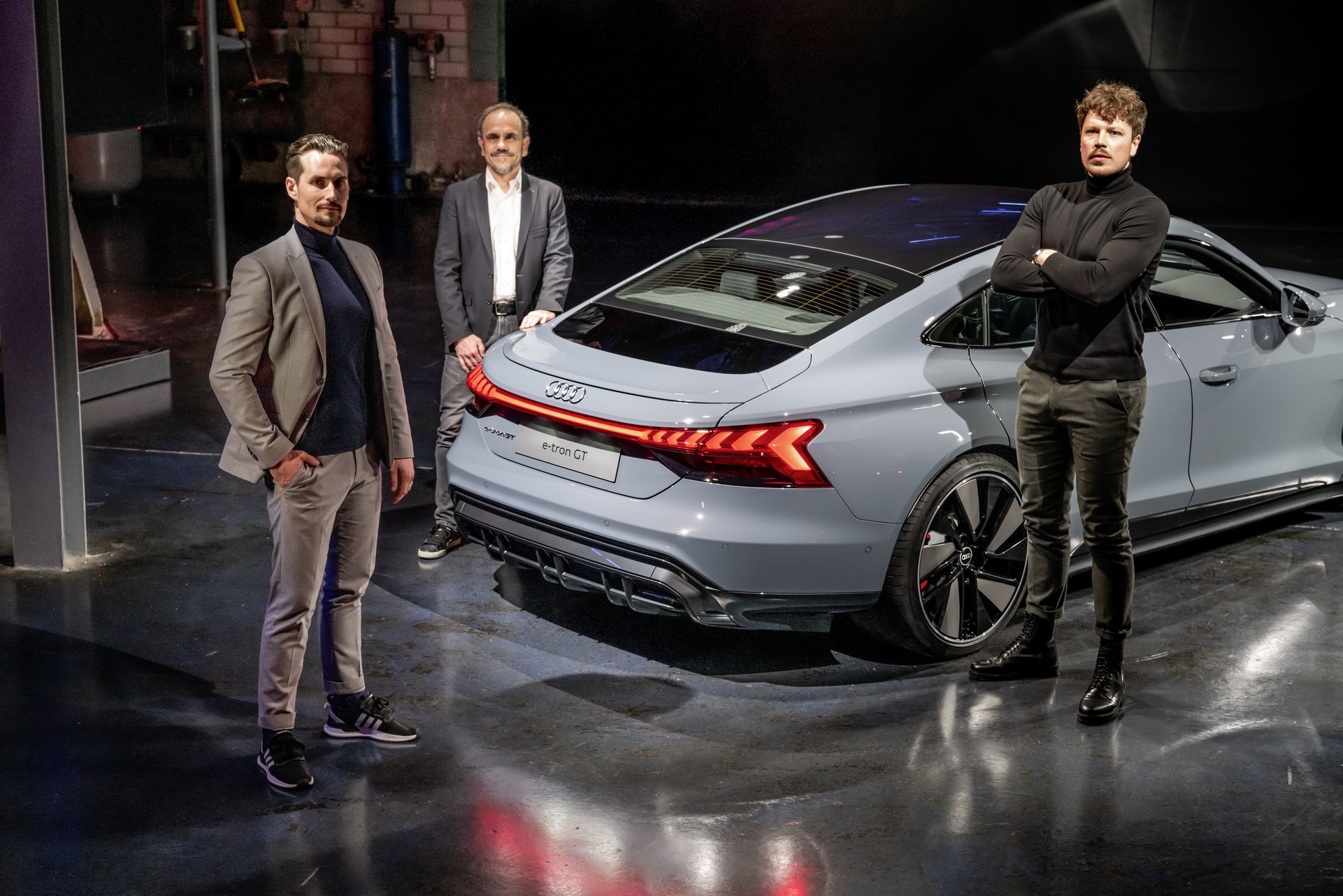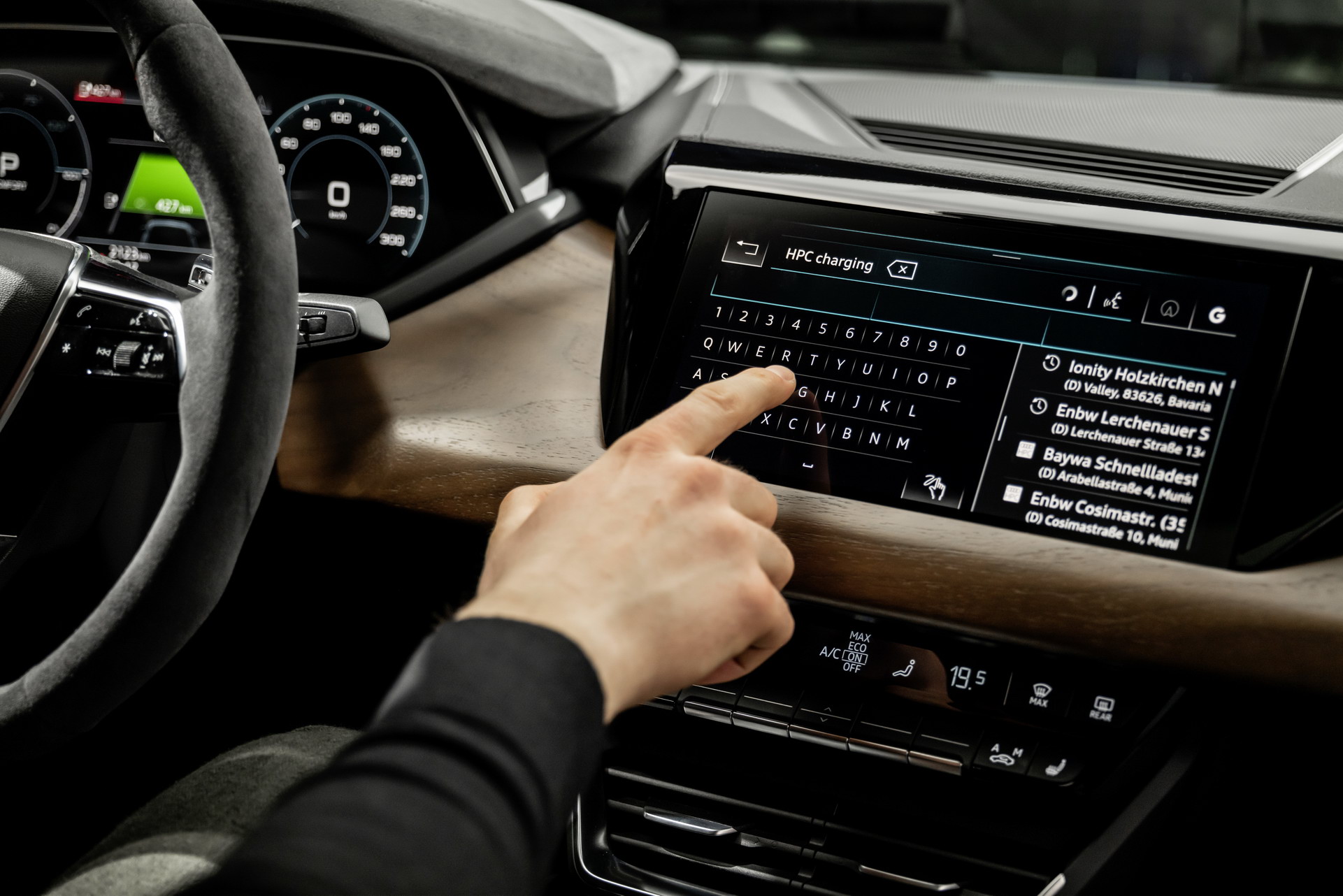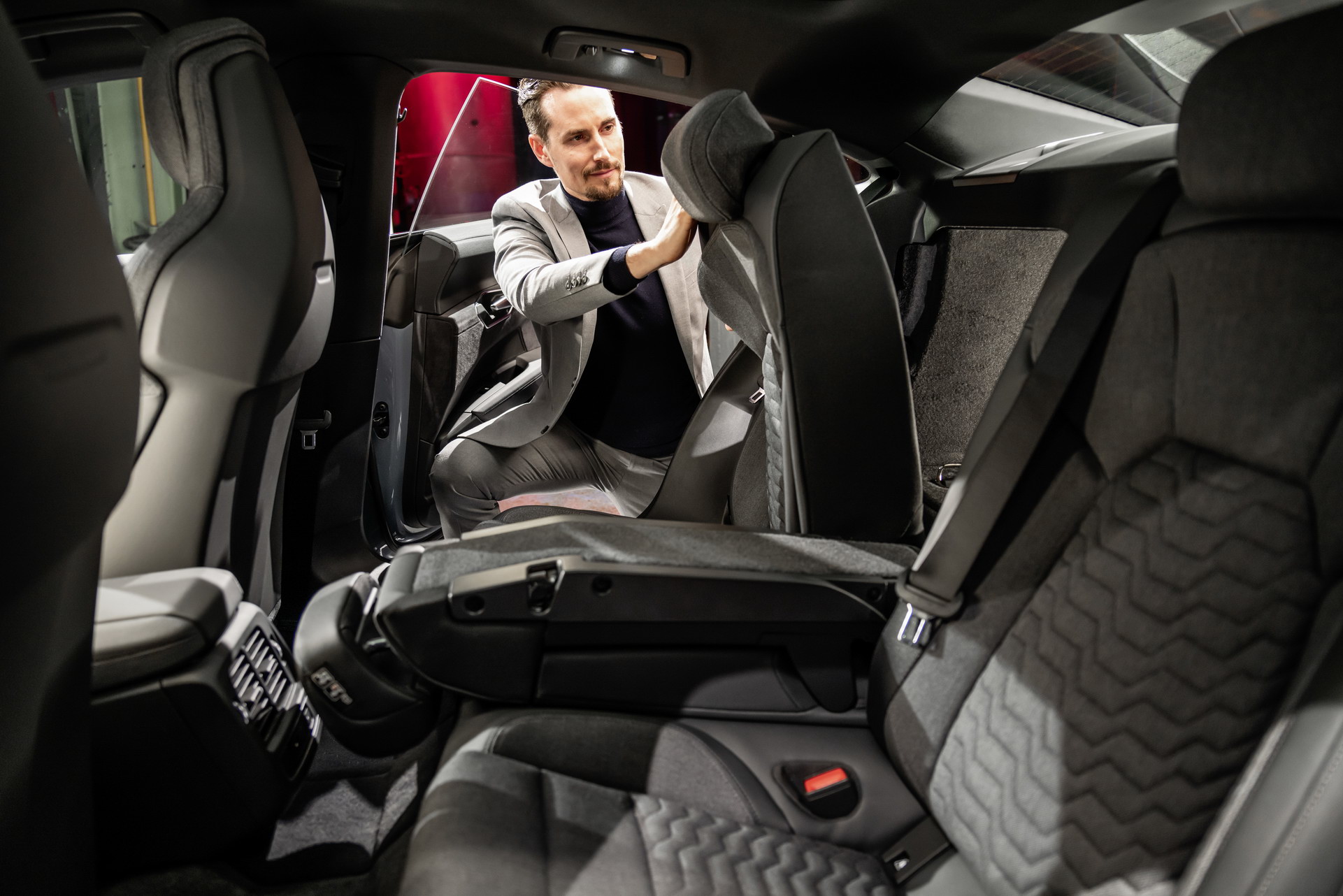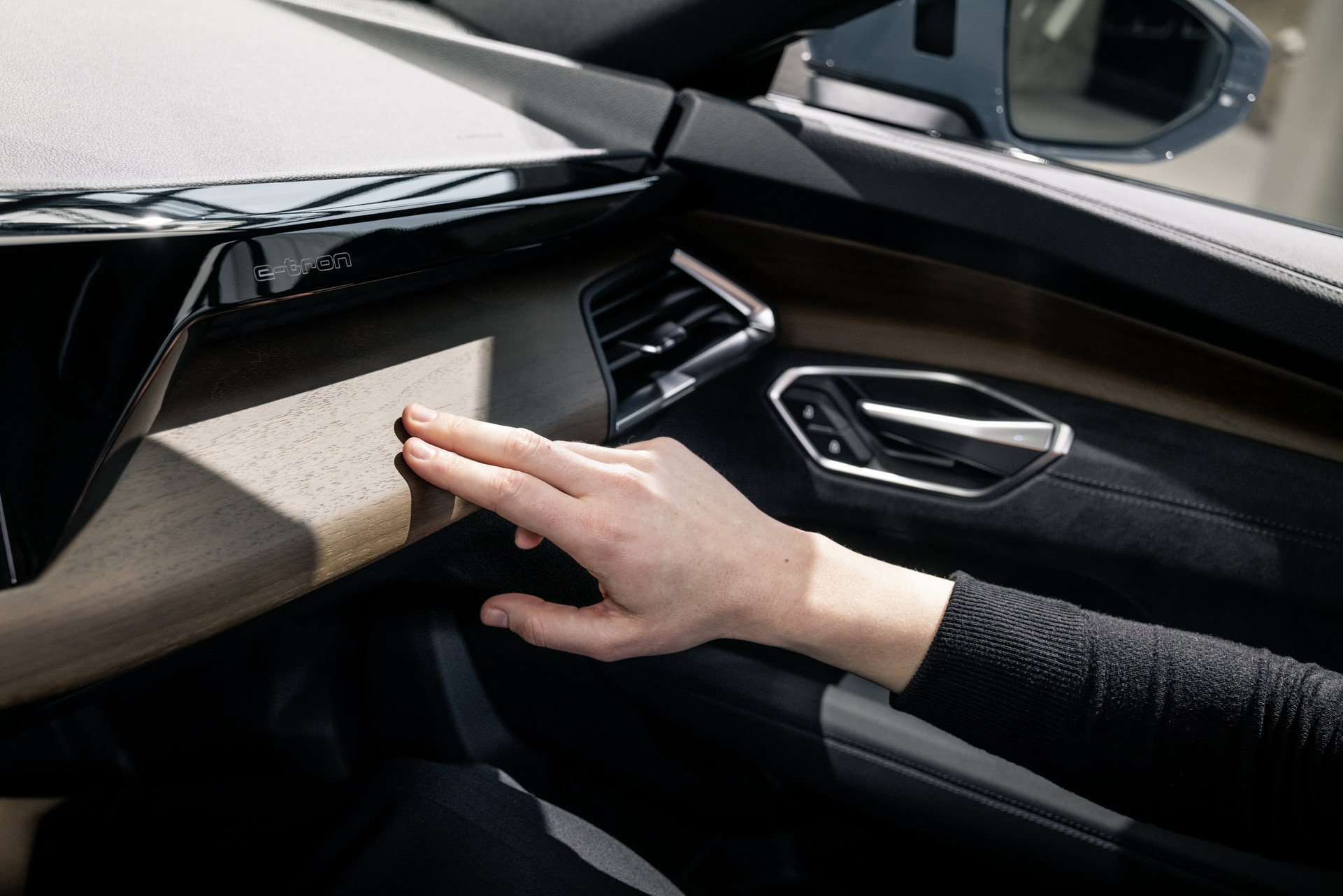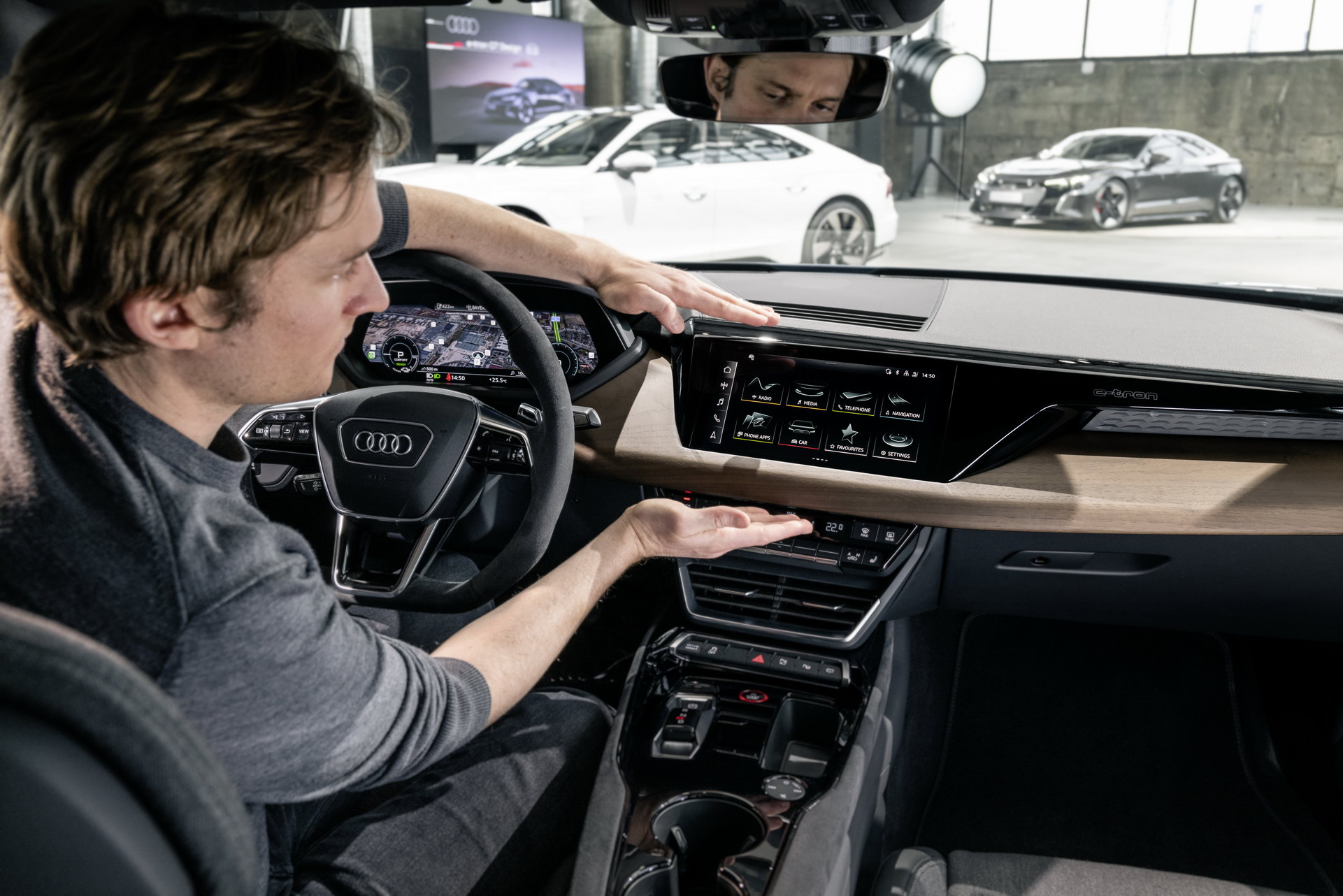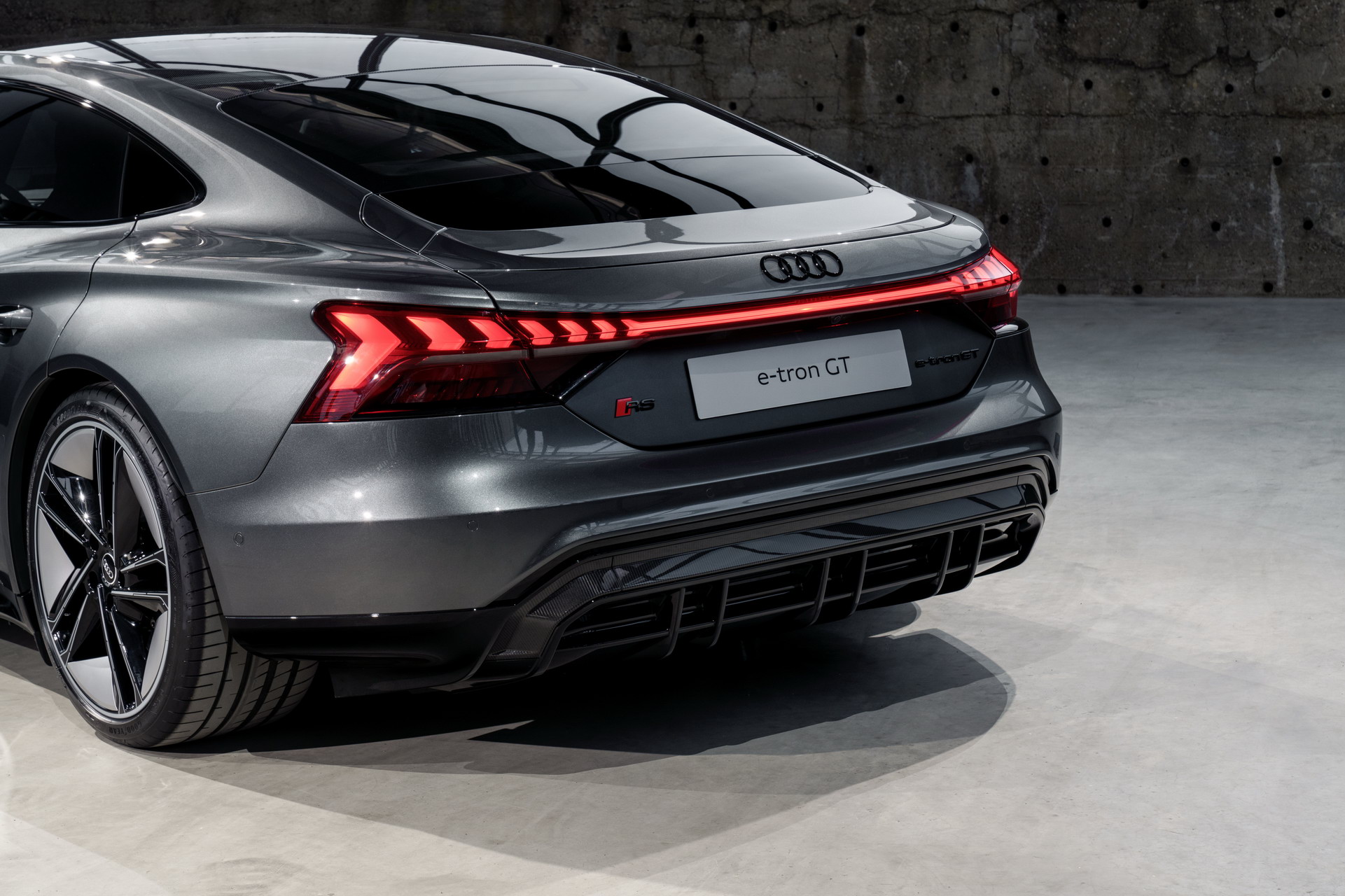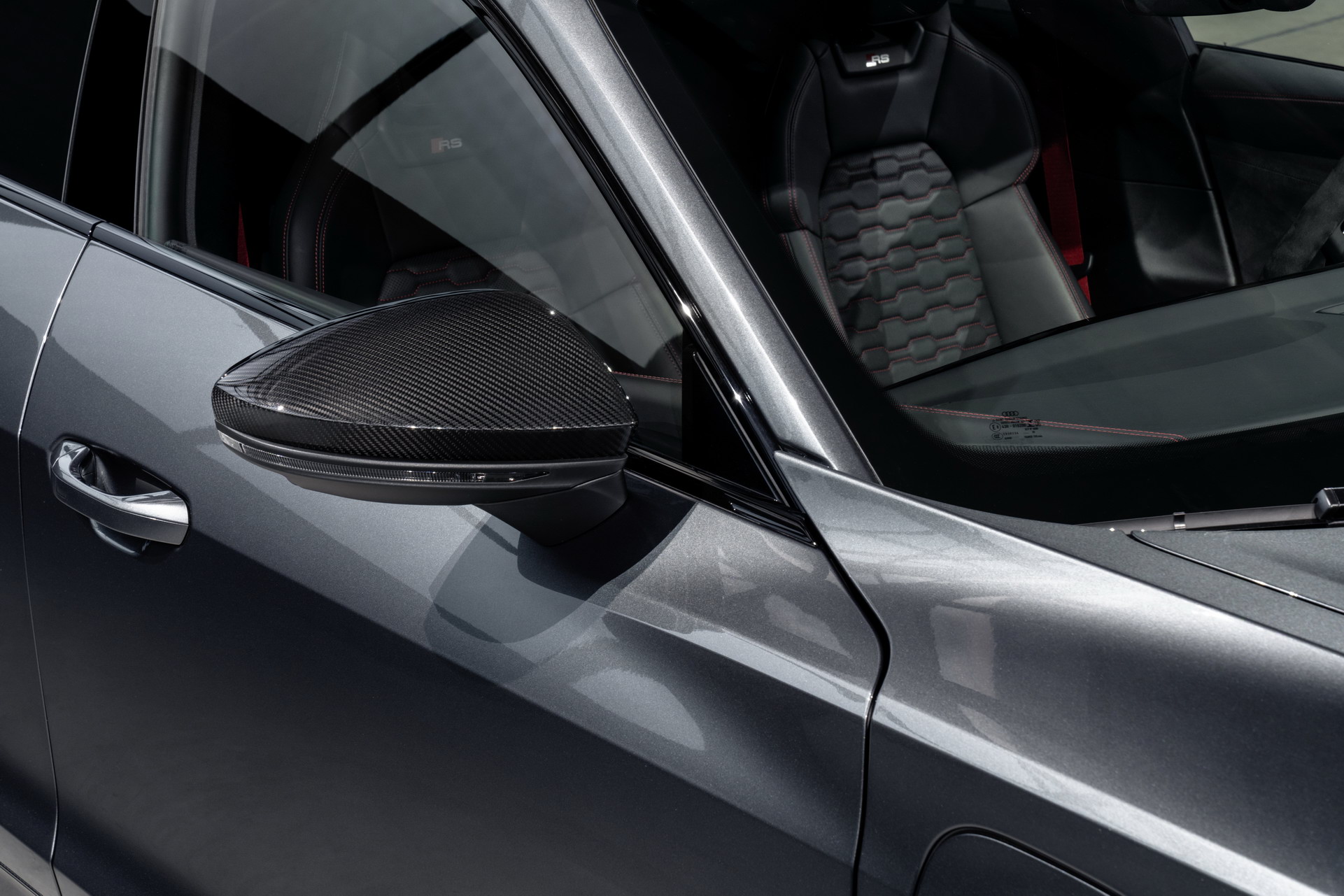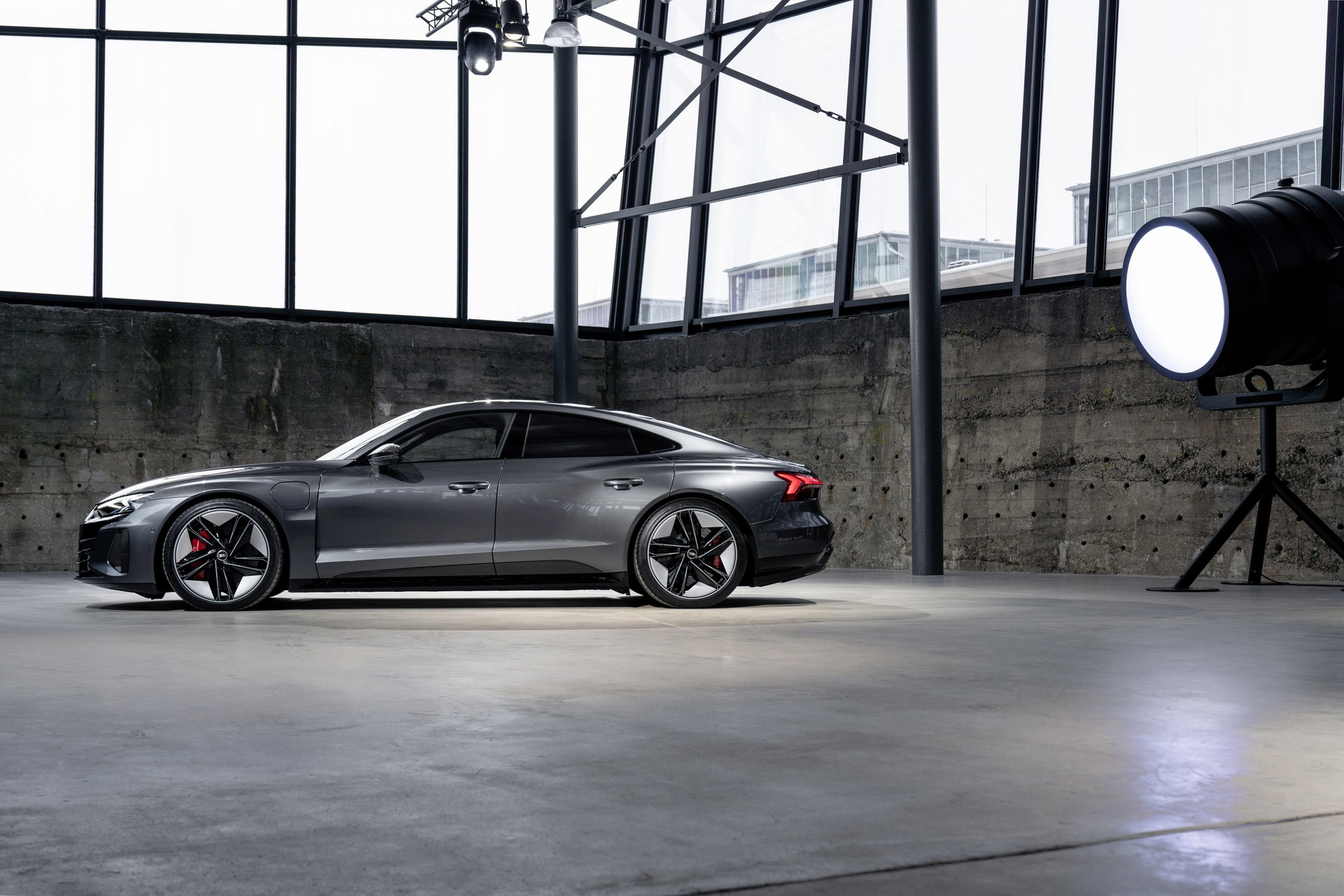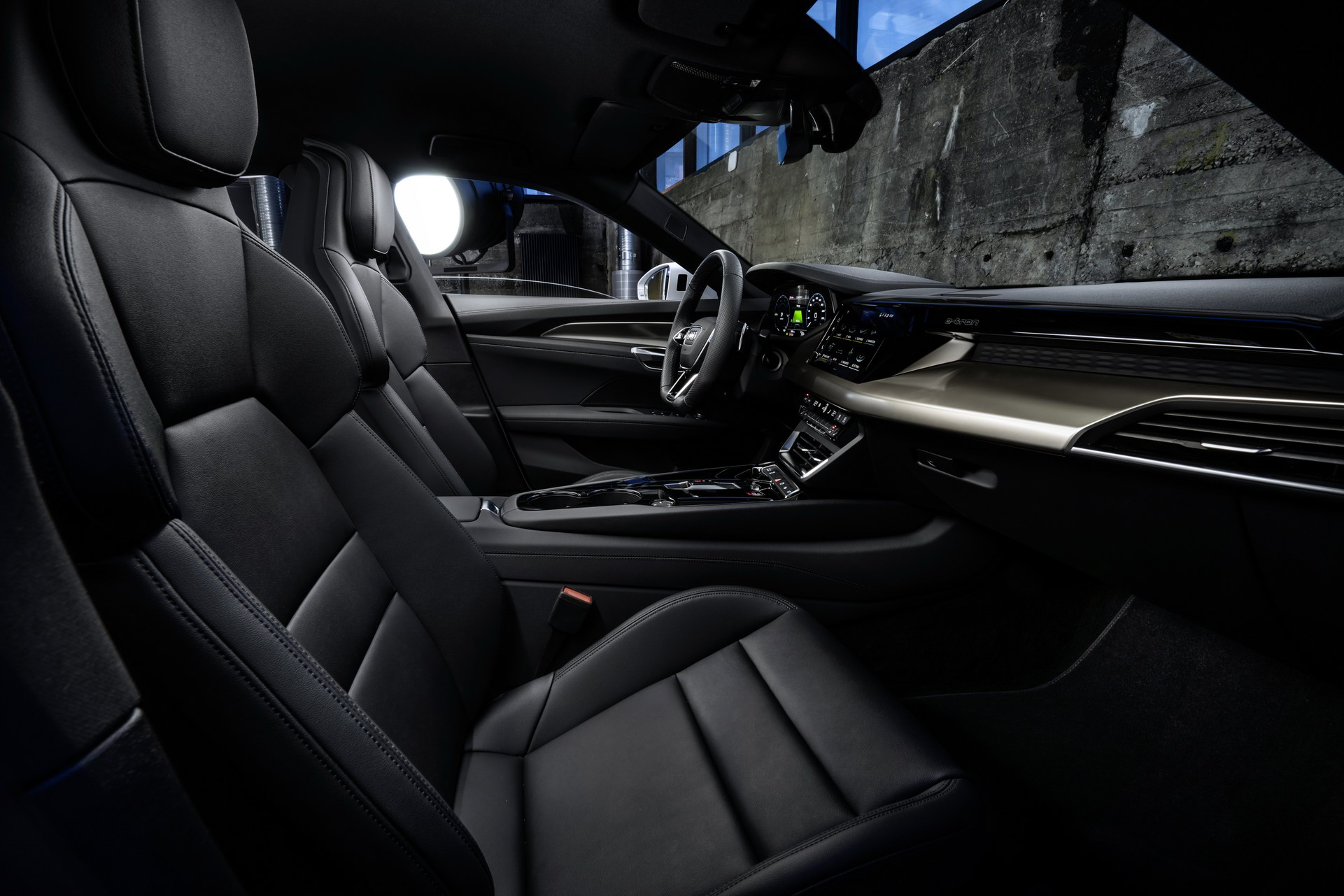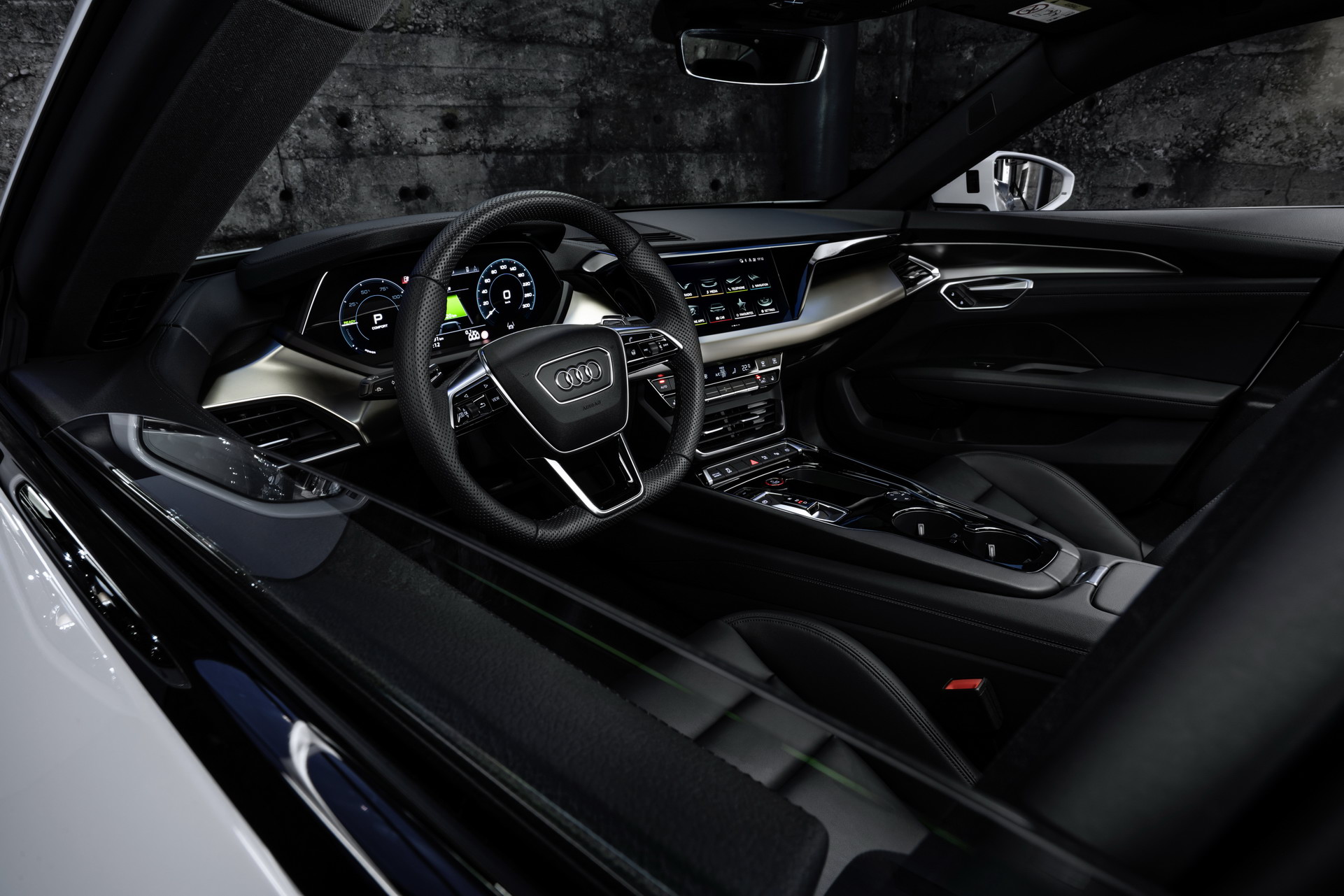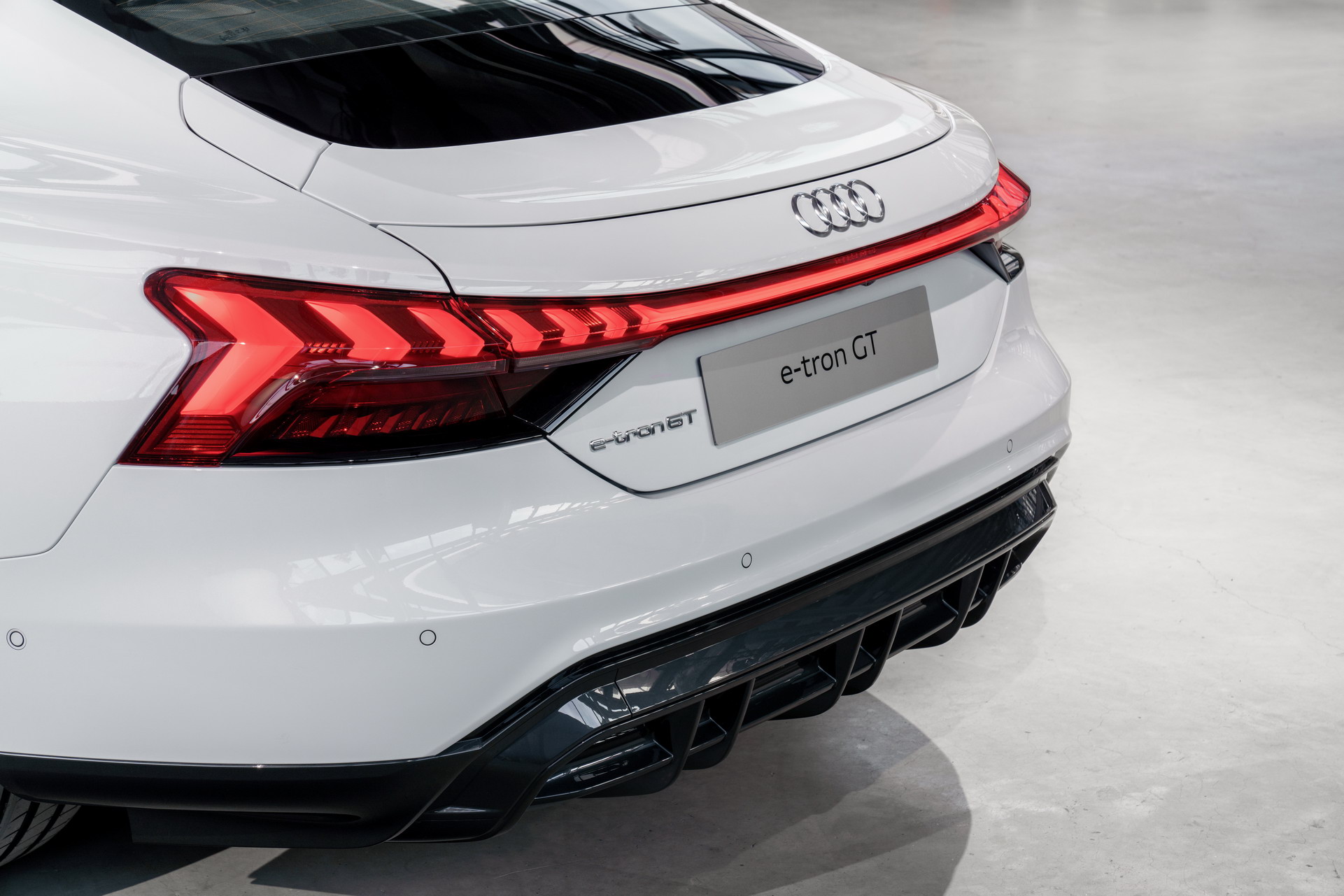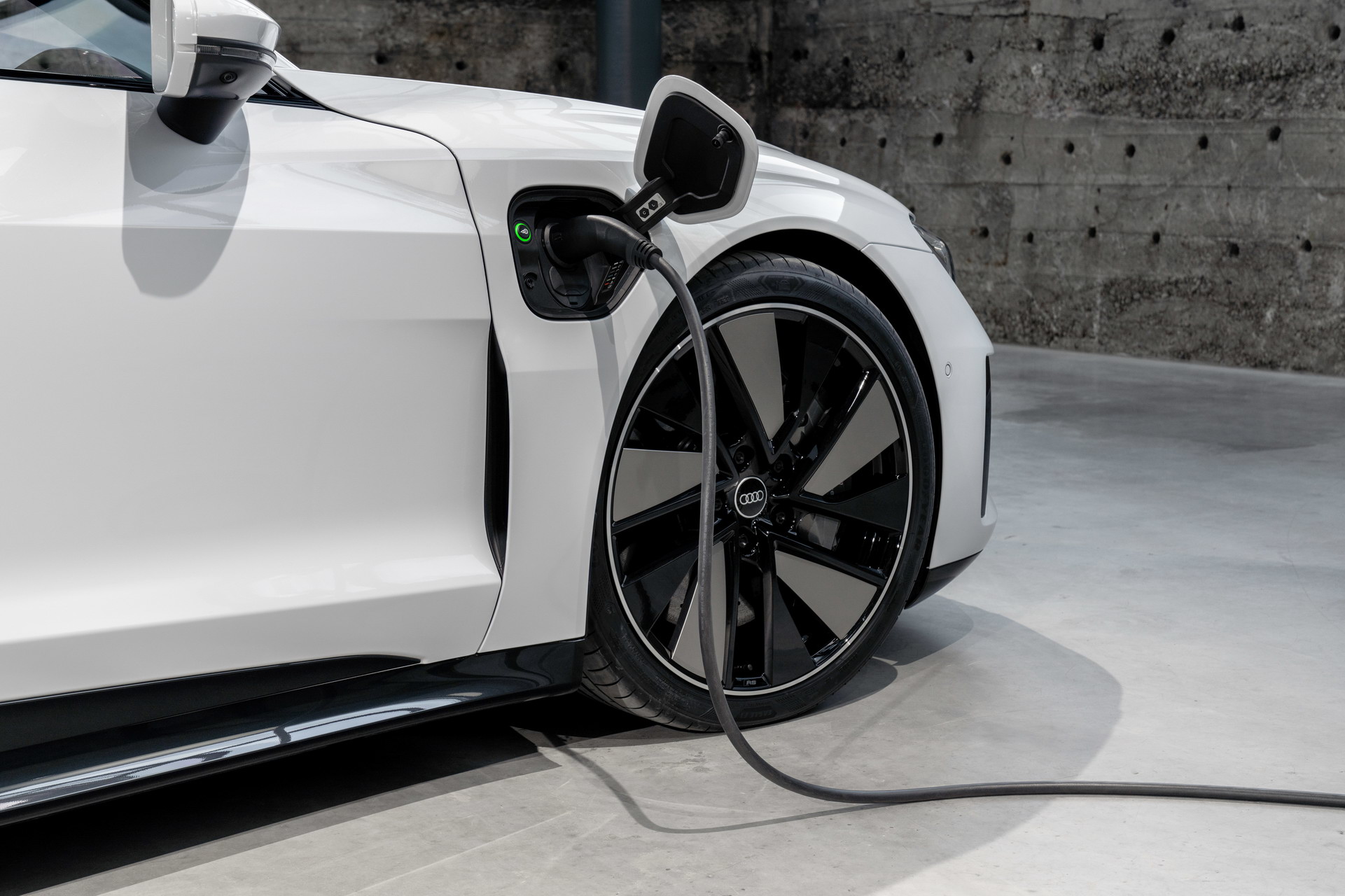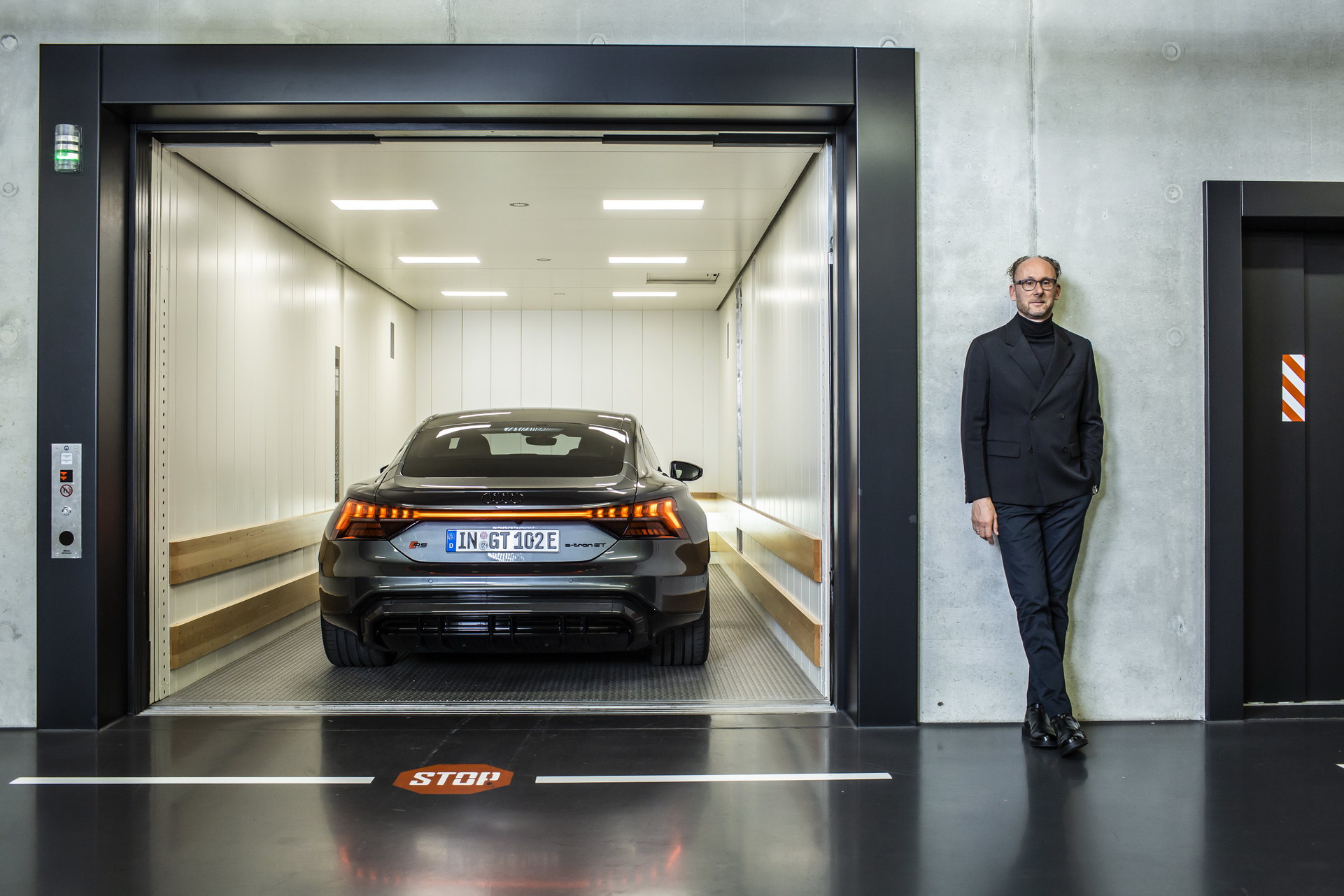Audi has just shown off their latest addition to a growing range of electric-only models: a sleek four-door performance sedan with a low roofline and coupe-like lines. The e-tron GT is undoubtedly one of the most striking Audi designs we’ve seen in years, and sits towards the top of the luxury car maker’s model hierarchy — both in terms of pricing and new tech.
With the e-tron GT, Audi aims to balance everyday usability with sports performance, as the brand aims to offer a prime competitor to both the Tesla Model S, and the Porsche Taycan. It sits on the VW Group’s high-end J1 Performance Platform designed by Porsche with the e-tron GT sharing its building blocks with the Taycan.
Available in two models, regular and the extreme performance RS in the US from launch, It’s one of Audi’s most powerful production cars. All models feature a dual-motor all-electric set-up with a two-speed transmission to aid performance. It incorporates Audi’s new 800V electrical architecture which allows even faster charge speeds, while the 86 kWh battery is good for 298 miles (488 km) predicted WLTP range in European spec.
Also Read: How Does The New Audi e-tron GT Compare To Porsche’s Taycan?
Audi’s presentation focused on the e-tron GT’s duality, emphasizing their intention to provide a blend of luxury, with a sporty driving experience as well as an increased refocusing on sustainability. Particular attention has been applied to the suspension and steering settings, to ensure that they provide the adaptability for both, while the car features some interesting quirks in the shape of ethical material choices.
Grand Turismo Design Influence
As the name implies, the e-tron GT was designed as a cross-continent traveler foremost. Practicality is something Audi repeatedly highlighted in their presentation. Despite the low, sweeping roofline, Audi claims the e-tron GT can seat four in comfort, with ample head-room. Meanwhile, there’s a 405-liter trunk, with an added 85 liters up front in the “frunk.”
The exterior design incorporates large wheels, a long wheelbase, and a relatively squat and flat stance to give the hunkered-down e-tron GT a sporty appearance. The pronounced rear haunches are referred to as “Quattro Blisters,” while the rear includes a new light design with the customary signature animations.
Space and Sustainability Inside
The Audi e-tron GT features the option of leather-free interiors, as well as the ability to specify seats that have been sustainably produced with recycled PET bottles. “As a team, we created a Gran Turismo that combines performance and comfort,” says Markus Däsch, member of the team responsible for interior design on the e-tron GT. “It’s a car that shows the term ‘luxury’ is changing in the area of electric mobility and is formed by sustainability and efficiency.”
To achieve Audi’s goal of creating a sportscar-like experience, the seating position is kept low, with a cut-out battery and flat battery floor combining to lower the cabin. The central screen is angled towards the driver, while the “lightweight” design philosophy influences the central console and dashboard, to create a spacious feeling.
A Slippery Silhouette
Audi claims that the e-tron GT’s exterior design has been greatly influenced by the synergy created between the designers and aerodynamicists. “In the case of the e-tron GT, we started 38 months before the start of production on aerodynamics and aeroacoustics,” says Moni Islam, Head of Development, Aerodynamics / Aeroacoustics.
Audi claims that the e-tron GT achieves one of the lowest drag coefficients in their model history, with a figure of 0.24. Features such as functional air-curtains help channel air around the aero-wheels at the front. A flat floor and rear diffuser help reduce lift. Meanwhile, active aero, such as the inlets, rear spoiler, and suspension, combine to add an estimated 30kms (nearly 20 miles) to the average range of the e-tron GT.
Another area in which Audi says they’ve applied particular focus to is aeroacoustics. With multiple hours spent in the wind tunnel, Audi claims to have achieved an outcome that matches the A7. Impressive.
Read More: Audi’s Head Of Design Speaks About The Upcoming E-Tron GT
Two Motors With Two Speeds
The entry-level Audi e-tron GT quattro has a combined power output of 476 PS (476 hp / 350 kW ) and 630 Nm (464.7 lb-ft) of torque, while the RS e-tron GT has a higher output, producing a total figure of 598 PS (589 hp / 440 kW) 830 Nm (612.2 lb-ft) of torque. Audi said that these power outputs are rated for European models.
In North America, the GT is rated for 469hp SAE and 464 lb-ft of peak torque (522hp SAE and 472 lb-ft with overboost), and the RS at 590 hp SAE and 612 lb-ft (637 hp SAE and same torque with overboost).
Both the e-tron GT Quattro and the RS e-tron GT feature a twin motor setup, with one motor for each axle. The 175Kwh front motor is shared across the two, whereas the rear motor’s output is higher for the RS — 335 Kwh vs. the Quattro’s 320 Kwh.
Both configurations have a two-speed gearbox allowing those lightning-fast getaways. You’re also provided with a 2.5-second “over-boost” function. In European specification, with overboost engaged, the RS e-tron can do the 0-60mph in 3.1 sec (0-100km/h in 3.3 sec), while topping out at a limited 155mph (255 km/h). The base Quattro gets to 60mph in 3.9 sec on the way to a top speed of 152 mpg (245 km/h).
As with the Taycan, the e-tron GT focuses on the repeatability aspect of its performance claims. An effective thermal management system allows for several foot-to-the-floor standing starts within short succession.
Yes, It Will Make Fake Sounds
Audi says it spent a lot of time composing a unique sound for the GT, with the optional (depending on the market) kit comprising of two control units and amplifiers in the luggage compartment. According to Audi, “they generate a separate exterior and interior sound, which is output by two loudspeakers each outside and inside the vehicle. Data about the rotational speed of the electric motors, the load, the vehicle speed, and other parameters serves as the basis for the digital sound, a synthetic sound that offers an authentic and finely nuanced impression of the work performed by the drive system.”
The driver can modulate the sound emitted through the Audi drive select that offers an efficiency profile that only activates the mandatory alerts, a comfort profile with a fuller sound, and the dynamic profile that is “sporty, voluminous and high quality” and which adds the interior system as well.
Suspension & Steering — Key Elements
Throughout Audi’s presentation, the suspension and steering systems were highlighted, with a focus on providing what Audi describes as a “dynamic drive, while always remaining confident and relaxed no matter how much strain is put on it.”
The suspension itself is a double-wishbone setup, with extensive use of aluminum in the components. The e-tron GT employs an electro-mechanical steering system, which aims to avoid being “abrupt” but maintains a sporty and direct feel.
The RS model gets adaptive suspension as standard, while it remains optional on the e-tron GT Quattro. The three-chamber air suspension system works in conjunction with electronic dampers and can be adjusted to lower or raise the car, dependent on the situation.
The controlled dampers, which are standard across the range, also work in tandem with the Audi Drive Select dynamic handling system. With four modes to chose from — “comfort,” “efficiency,” “dynamic,” and “individual — the air suspension, dampers, electric motors, two-speed transmission, and controlled rear-axle differential lock come together to offer different driving characteristics, as would be expected.
See Also: Audi e-Tron GT Enters Production At Carbon-Neutral Factory In Germany
The e-tron GT is also available with an optional all-wheel steering system, which turns the rear wheels in the opposite direction at low speeds, and in the same direction at speeds over 31 mph (50 km/h). The e-tron GT Quattro comes standard with a locking mechanical differential, while a controlled rear-axle differential lock is available as an option and is standard in the RS e-tron GT.
In addition, the e-tron GT’s flat-bottom battery architecture means that the battery has been placed even lower in the car, for a center of gravity that supposedly betters even the Audi R8 supercar.
Battery And Charging
The Lithium-ion battery is the same across both the RS and quattro models of the e-tron GT. It’s an 86 kWh (93 kWh gross) battery that integrates 33 cell modules, each of them comprising of twelve cells. Thirty modules form the lower level that features a wide recess in the rear section, creating space for the rear passengers’ feet. This layout also contributes to the very low center of gravity.
As with the Porsche Taycan, thanks to the new 800V electrical architecture, the e-tron GT allows charging at the industry-benchmark 270 kW using DC fast-chargers. This allows it to replenish its battery from 5-80% in just 22.5 minutes – among the quickest charging rates currently available of any EV. This allows it to recharge energy for up to 62.1 miles (100km) in just over five minutes.
In the U.S., preliminary manufacturer’s estimated ranges based on approximation of EPA test cycles for a full charge are 238 miles (383 km) for the e-tron GT and 232 miles (373 km) for the RS e-tron GT. Audi said that EPA estimates not yet available at this time.
The e-tron GT features two charging ports on either side, located on the fenders, behind the front wheels. Both charge ports allow for AC charging, while the passenger side supports DC fast charging. For homing charging, The e-tron GT can be juiced-up with 11 kW AC as standard, which allows it to recharge an empty battery overnight. An optional 22 kW charger for home-use will be offered as well.
Dimensions: Gran Turismo Par Excellence
The Audi e-tron GT has the dimensions of a classic gran turismo: With a wheelbase of 2.90 meters (9.5 ft), it measures 4.99 meters (16.4 ft) in length, 1.96 meters (6.4 ft) in width, and maintains that coupe-like roofline with a height of just 1.41 meters (4.6). The luggage compartment provides a volume of 405 liters (14.3 cu ft) and a second luggage compartment below the front hood offers are further 81 liters (2.9 cu ft) of space.
Pricing starts from $99,900 before incentives
Set to go on sale in the USA this summer, the e-tron GT will be offered in three grades, the GT quattro Premium Plus from $99,900, the GT quattro Prestige from $107,100 and the RS GT from $139,900, with all prices excluding destination and taxes. However, Audi says that the GT models may qualify for up to $7,500 in federal incentives. Production will take place at Audi Böllinger Höfe at Neckarsulm in Germany. In its home market, pricing will start at €99,800 for the quattro and from €138,200 for the RS.
Audi expects strong US sales, with 50% of total cars produced destined to be purchased by US consumers. Europe and the UK will be two more markets of interest for the e-tron GT, with strong sales of the Audi e-tron propelling optimism.
So, what do you think about the new Audi e-tron GT? It appears to share a lot with its Taycan cousin, but have Audi’s engineers been able to differentiate it enough? Let us know in the comments below.






